After a few days of trying and testing these tools for this article, I’ve shortlisted 20 of the best premium and free WYSIWYG HTML editors to help you find the best one for your needs.
Table of Contents
- Best Free WYSIWYG Editors
- Best WYSIWYG Premium Editors
- 5 Key Benefits of a WYSIWYG Editor
- WYSIWYG Example: Learn How an HTML Editor Works
- Choosing the Right WYSIWYG HTML Editor
- WYSIWYG Interface: 4 Essential Features
- Pick the perfect WYSIWYG HTML editor.

1. HubSpot's Content Hub: Best for Ease of Use and CMS connectivity
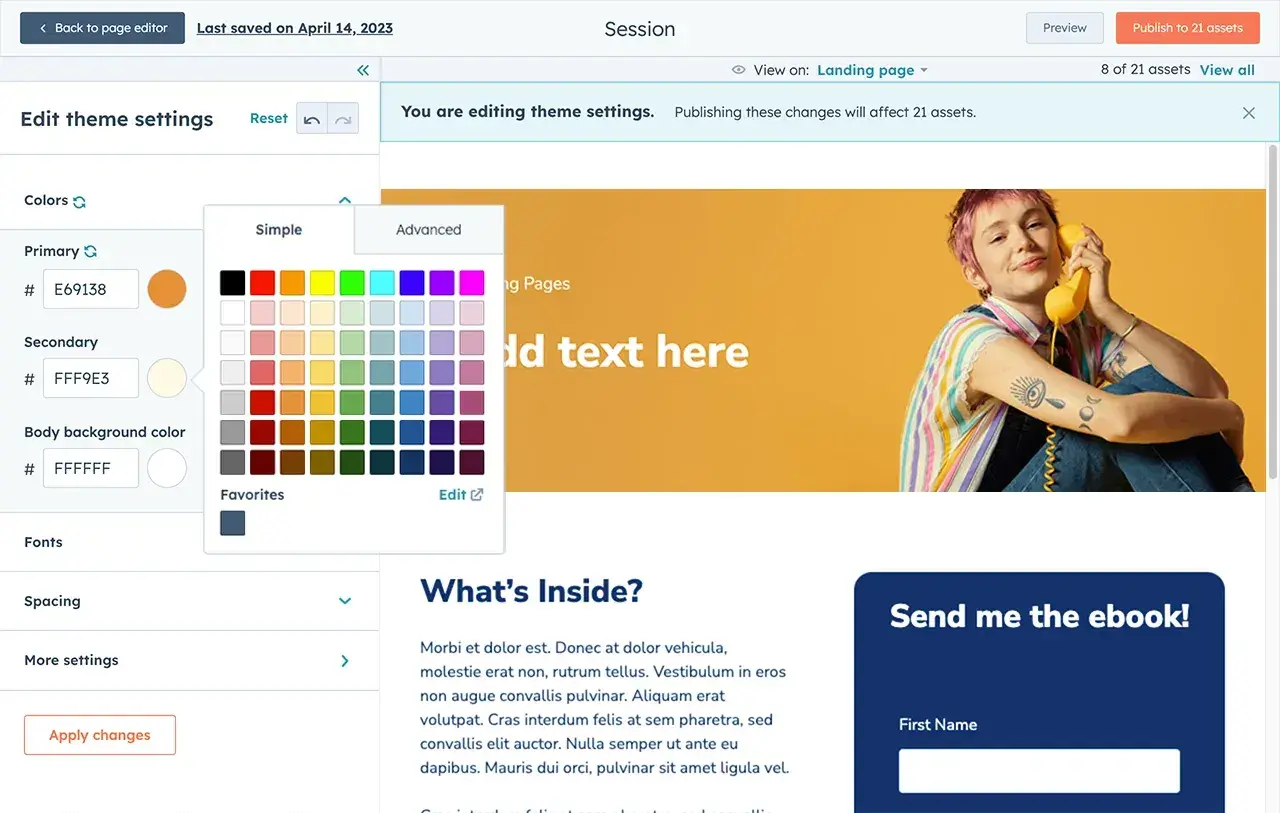
Try HubSpot's Free WYSIWYG Editor
HubSpot’s WYSIWYG editor comes built-in within the Content Hub. The visual page editor makes it easy to design websites and preview your designs effortlessly, whether you're an advanced developer or new to coding.
You can start off by choosing a layout from the library or create a custom design. You can also easily insert out-of-the box modules and sections and see changes in your website layout in real-time.
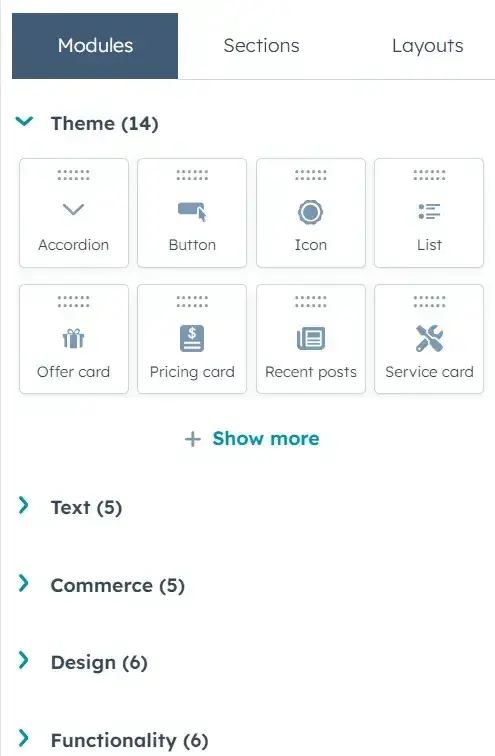
The tool also offers pre-made templates for setting up a website quickly, even if you don’t have a vision in mind.
What I particularly appreciate about HubSpot’s WYSIWYG editor is that it lets you optimize your site for search engines with automated recommendations to fix certain issues. This isn’t always the case with other editors, where you have to download separate SEO optimization plugins. The tool explains each recommendation in detail with steps to implement it.
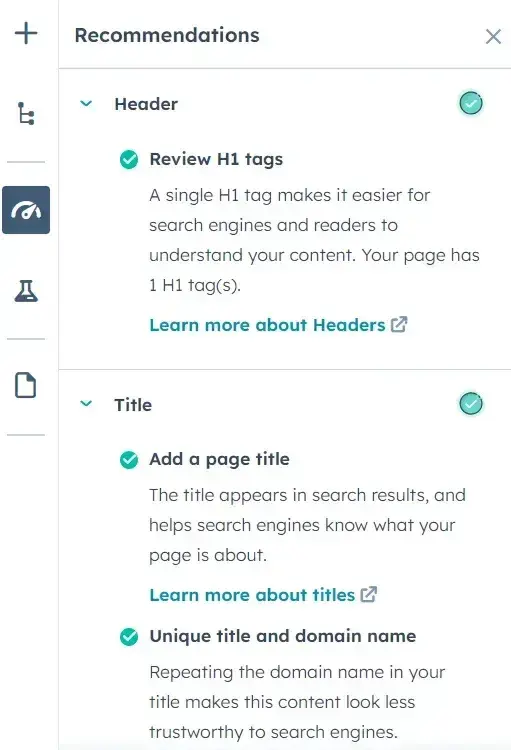
This editor combines rich site development features with a powerful all-in-one CRM experience. Often, adding one more tool to your tech stack means updates and changes you’ll need to adjust to.
However, this free tool creates a consistent experience across its tools for marketing, sales, content management, and customer service.
Why I Recommend
- Broad knowledge base for troubleshooting
- Extensive asset marketplace with premium cloud hosting
- CMS and CRM connectivity for content updates and management
Things to Consider
- No-code editor might not be suitable for all developers
2. CKEditor: Best for Extensive Customization and Plugin Options
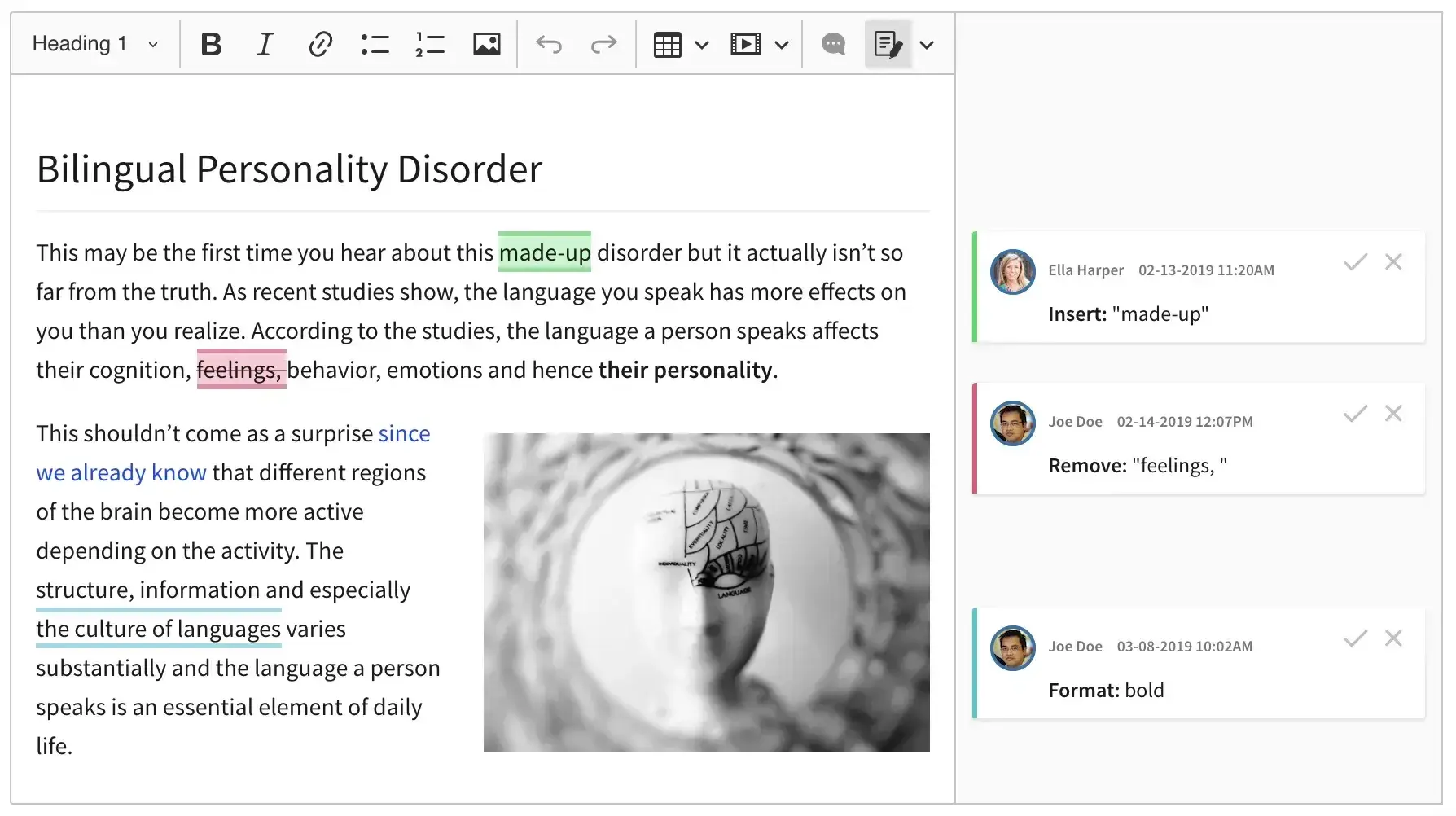
CKEditor is a browser-based HTML editor with a minimal and user-friendly interface. Creating a landing page with this tool is as seamless as working on a Google Doc. You can collaborate with multiple users by leaving comments and tracking changes across different versions. You can also accept and decline a specific change (or all of them) with a single click.
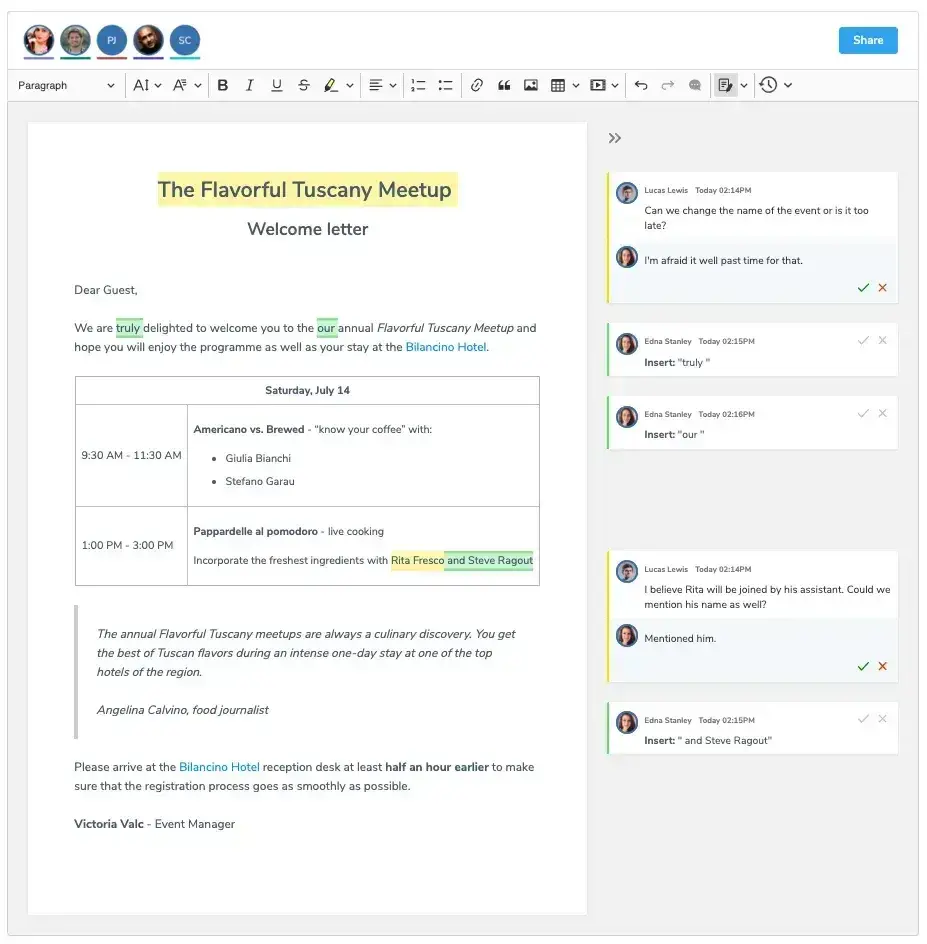
You can also use CKEditor as a plugin within website builders and bring necessary content processing features to the web.
The AI assistant is one of the standout features of this WYSIWYG editor. You can leverage the power of AI models from OpenAI and Azure to enhance your website content. Use predefined prompts or create your custom input, and the AI assistant will help you generate and improve content.
It also reduces the time you spend on formatting. You can easily add content from existing sources without having to make any manual changes.
CKEditor’s other benefits include fast loading (which saves development time) and the ability to change projects on the fly without manually editing and uploading them to your server.
Why I Recommend
- Extensible via plugins and works with different website builders
- Can customize color, language, dimensions, toolbar, and other parts of the editor
- Media Embed plugin allows you to insert videos, tweets, Instagram posts, code snippets, and math formulas
Things to Consider
- Lacks built-in presets and design templates
- More suited as a rich-text editor than web design
3. Editor.js: Best for Open-Source Editing for Beginners
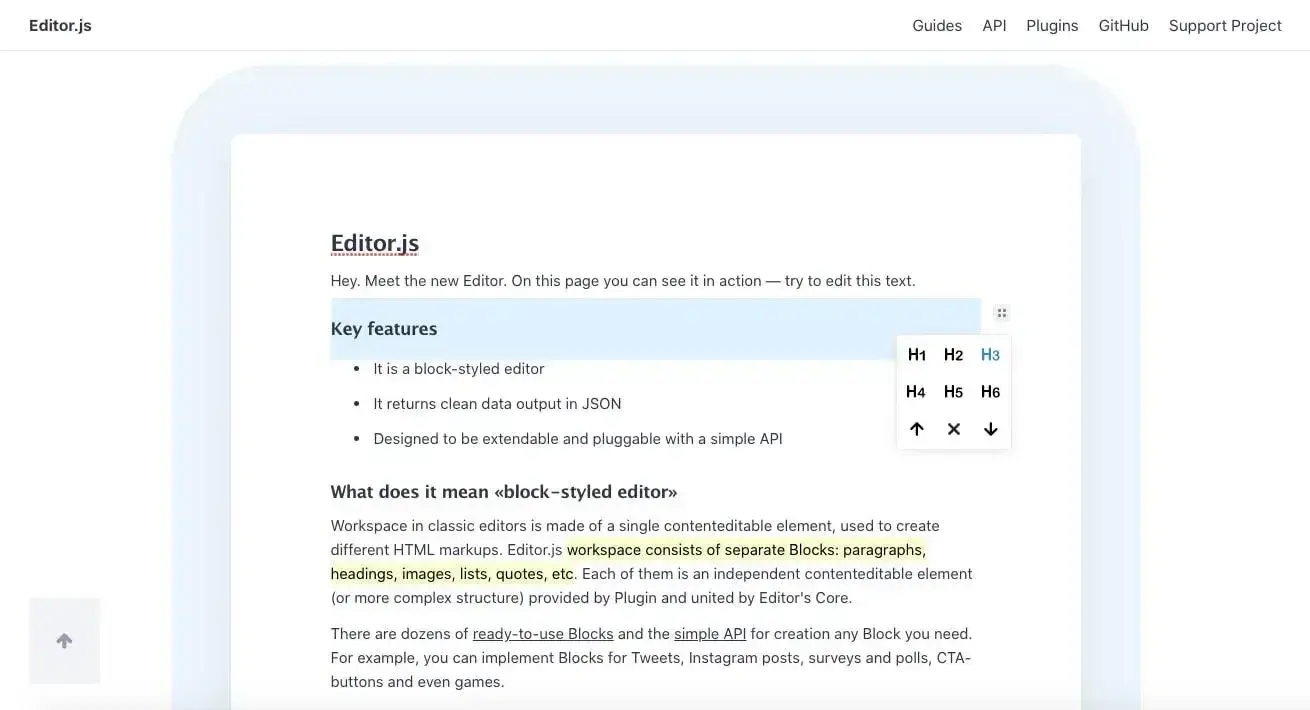
Editor.js is an open-source, block-styled editor that allows you to create a web page with design and text blocks. You can move around and reorder these blocks to customize your output. This tool works similarly to WordPress's Gutenberg editor.
When you click on a design block, you see the specific options available for editing and enhancing it. Similarly, when you click on text content, options for text formatting and inline styles appear.
For example, you can add different types of headers, bulleted/numbered lists, tables, checklists, and more elements in a context block.
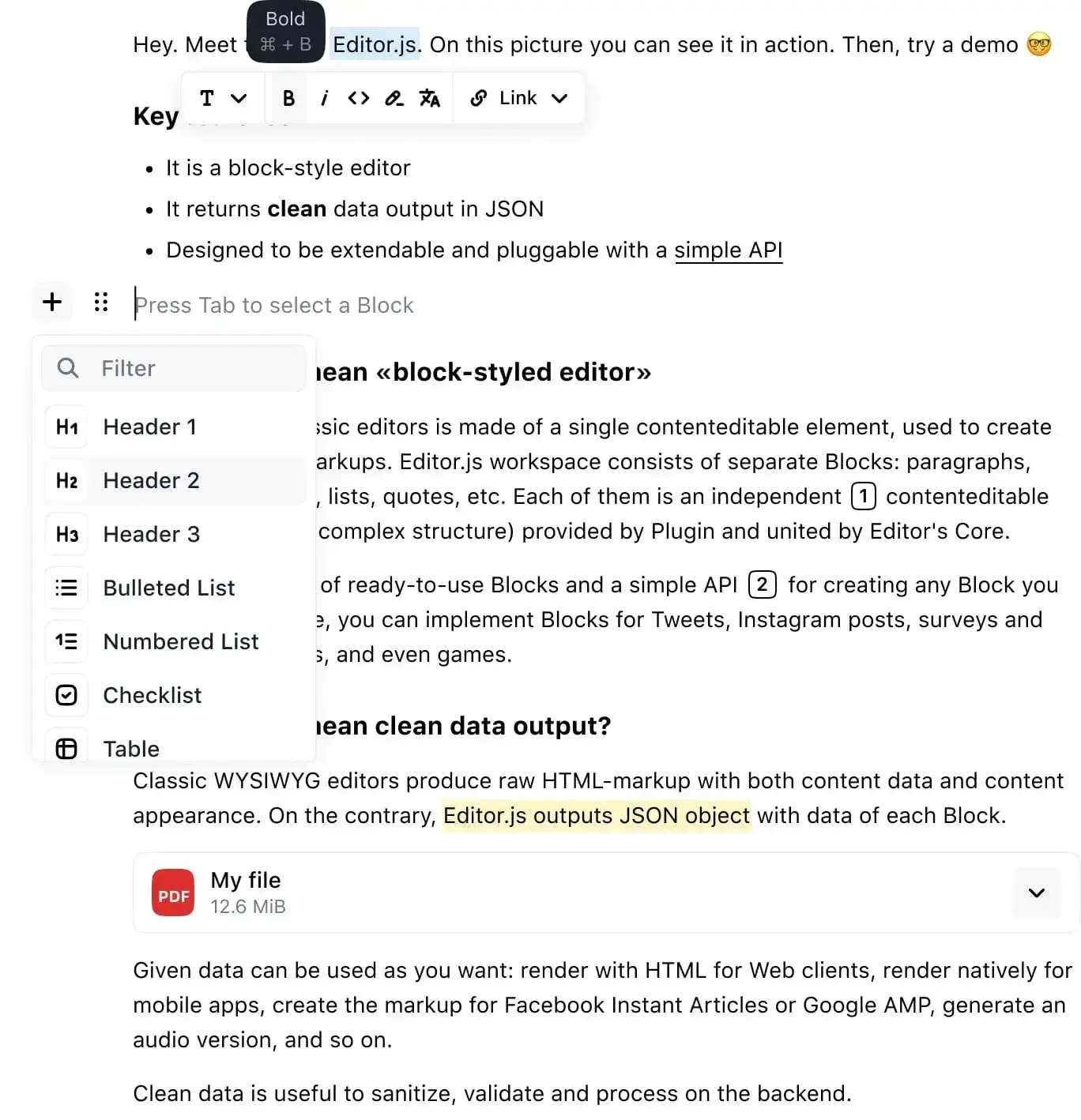
You can extend Editor.js and use it as a plugin, thanks to its application programming interface (API). It also returns clean data in the JSON output format. That means you can do way more with the data.
You can render with HTML for web clients, render natively for mobile apps, create markup for Facebook Instant Articles or Google AMP, or generate an audio version for screen readers. You can use it across various platforms like Web, iOS, Android, chatbots, RSS, AMP/IA, and speech readers — basically, everywhere.
Why I Recommend
- Designed to be extensible and pluggable with a simple API
- A dozen provided plugin blocks to get started quickly with custom build options
- Produces clean JSON data for web, mobile app, Facebook Instant Article, Google AMP, and speech reader use
Things to Consider
- Doesn’t offer a live preview of the content within the editor itself
- Block-styled interface can be challenging for those used to WYSIWYG controls
4. TinyMCE: Best for Robust and Comprehensive Features
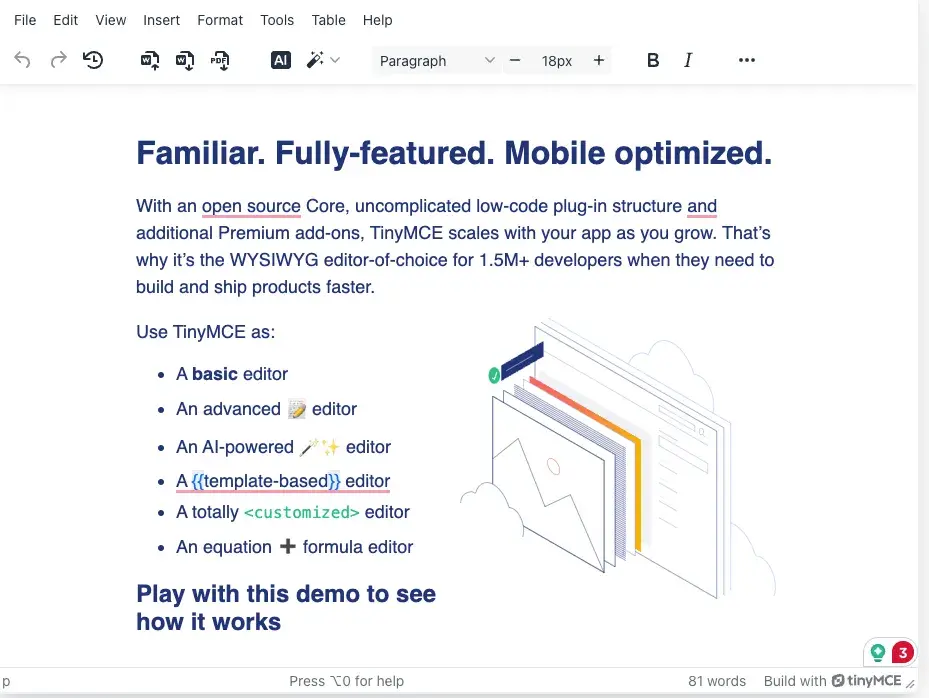
TinyMCE is the rich-text editor behind many products, including Evernote, Atlassian, and Medium. The WYSIWYG editor enables developers to build beautiful web pages and platforms.
TinyMCE also offers an AI Assistant plugin. With this plugin, you can connect any AI model of your choice to the TinyMCE editor via API and use this model within your design process. It features pre-written prompts to help users create content more efficiently and effectively.
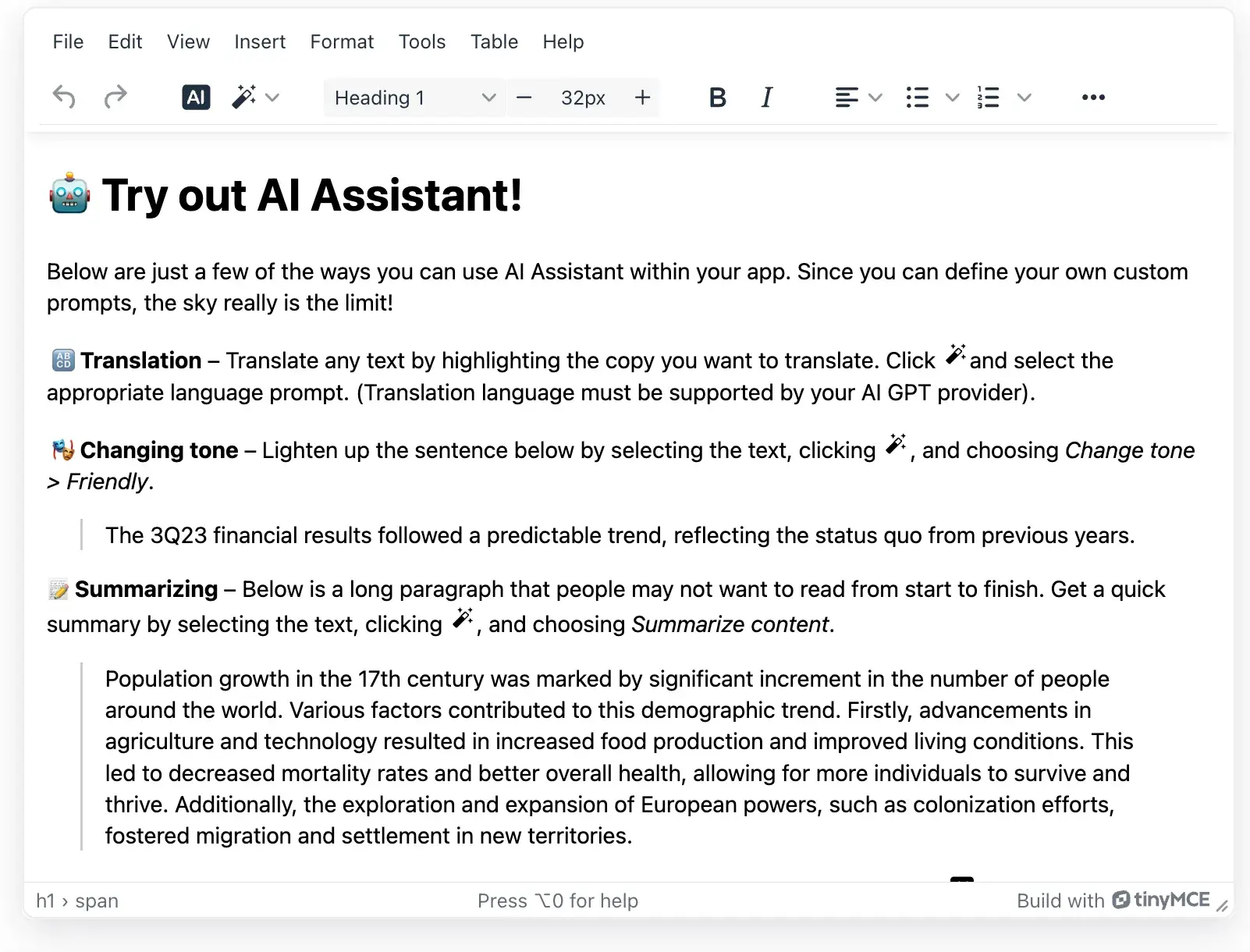
The tool is easy to integrate into your preferred tool. You can deploy it in cloud-based, self-hosted, or hybrid environments.
The setup allows you to incorporate frameworks such as Angular, React, and Vue. You can also extend this tool with over 50 plugins, each with over 100 customization options.
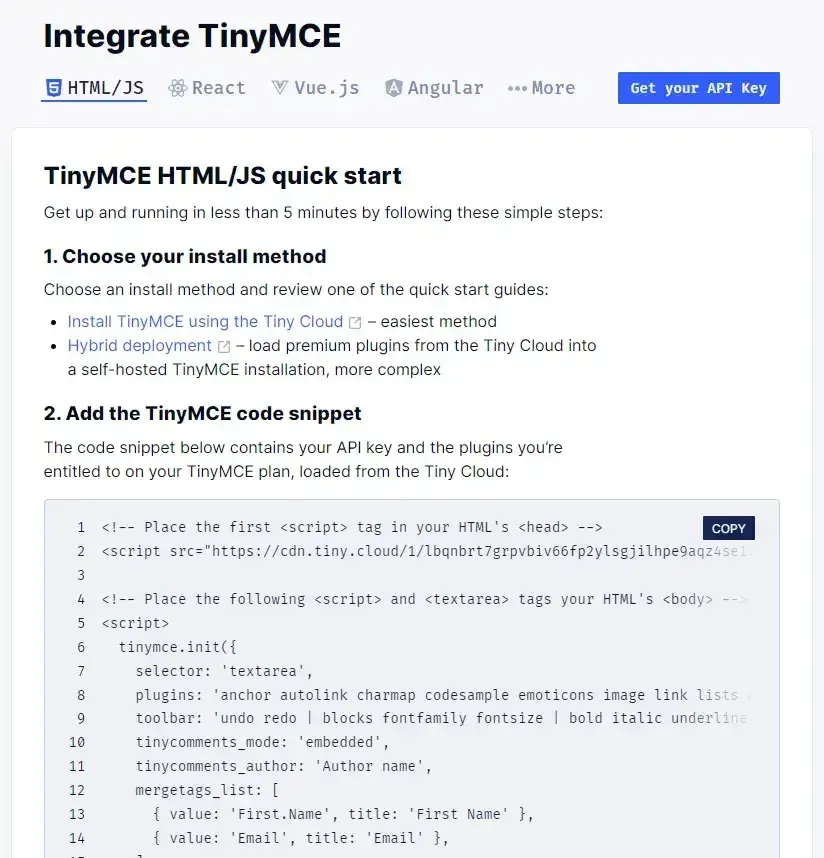
TinyMCE gives you full control of your design with functions for creating and editing tables, establishing font families, searching and replacing fonts, and changing font size.
It also provides several cloud security features, including JSON web tokens and private RSA keys to better secure your content.
Why I Recommend
- Use the editor in three modes: classic, inline, and distraction-free
- Extension options with over 50 premium and open-source plugins with 100+ customization options each
- Cloud security features and content security policy (CSP) to protect your content
Things to Consider
- Comparatively higher pricing for premium features
- Slower performance when working with large amounts of content
5. Bubble: Best for Building Web Applications
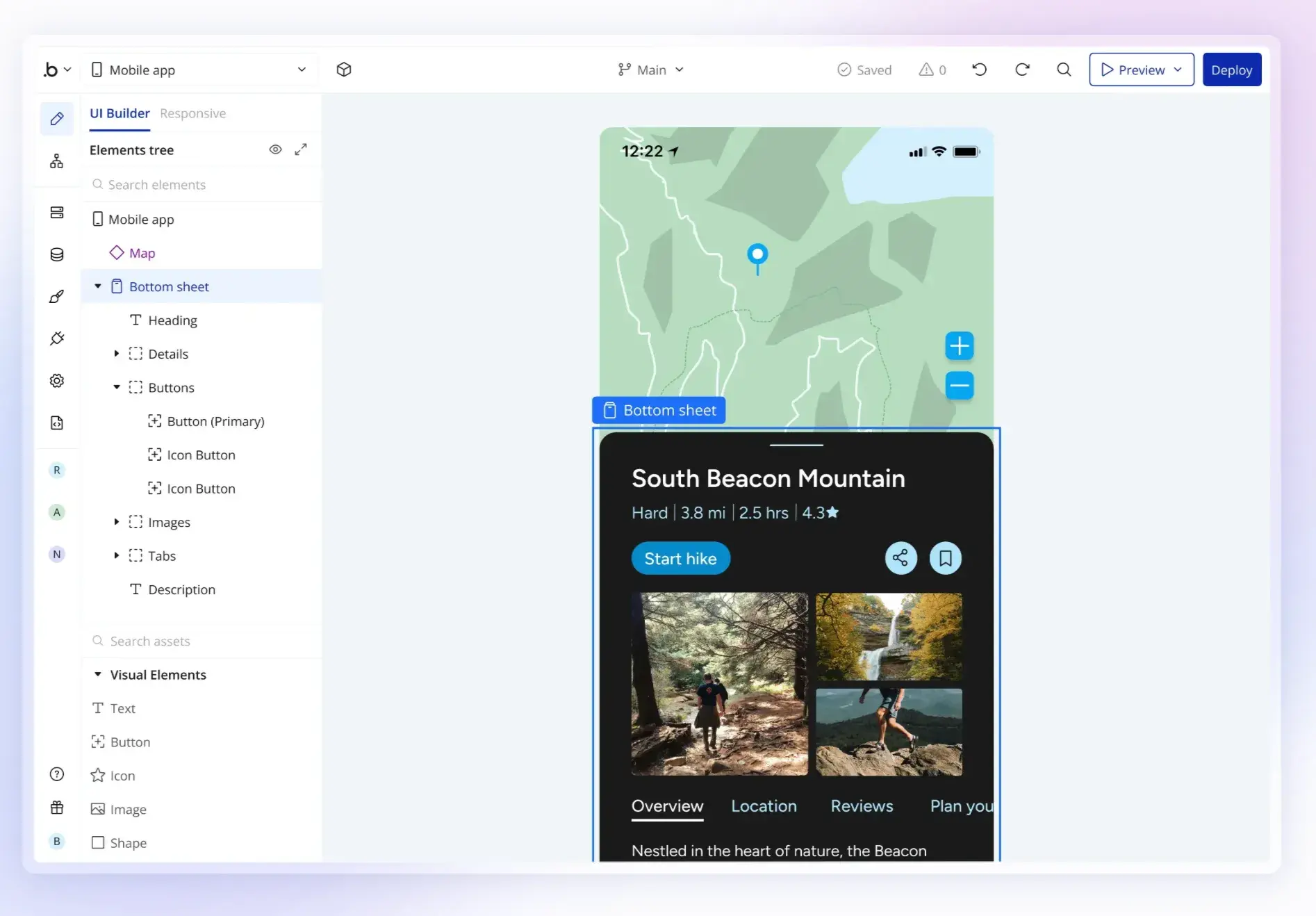
Bubble is a no-code editor for building fully functional web applications. Its robust point-and-click editor allows you to create and customize web apps — whether they’re simple prototypes, sophisticated SaaS products, or entire marketplaces.
Bubble's user-friendly interface makes building and customizing applications simple and quick.
I think this tool is particularly helpful for non-tech-savvy users because you can quickly pick components from a built-in library and bring your vision to life.
Here’s an example where I explored different components in Bubble’s template library:
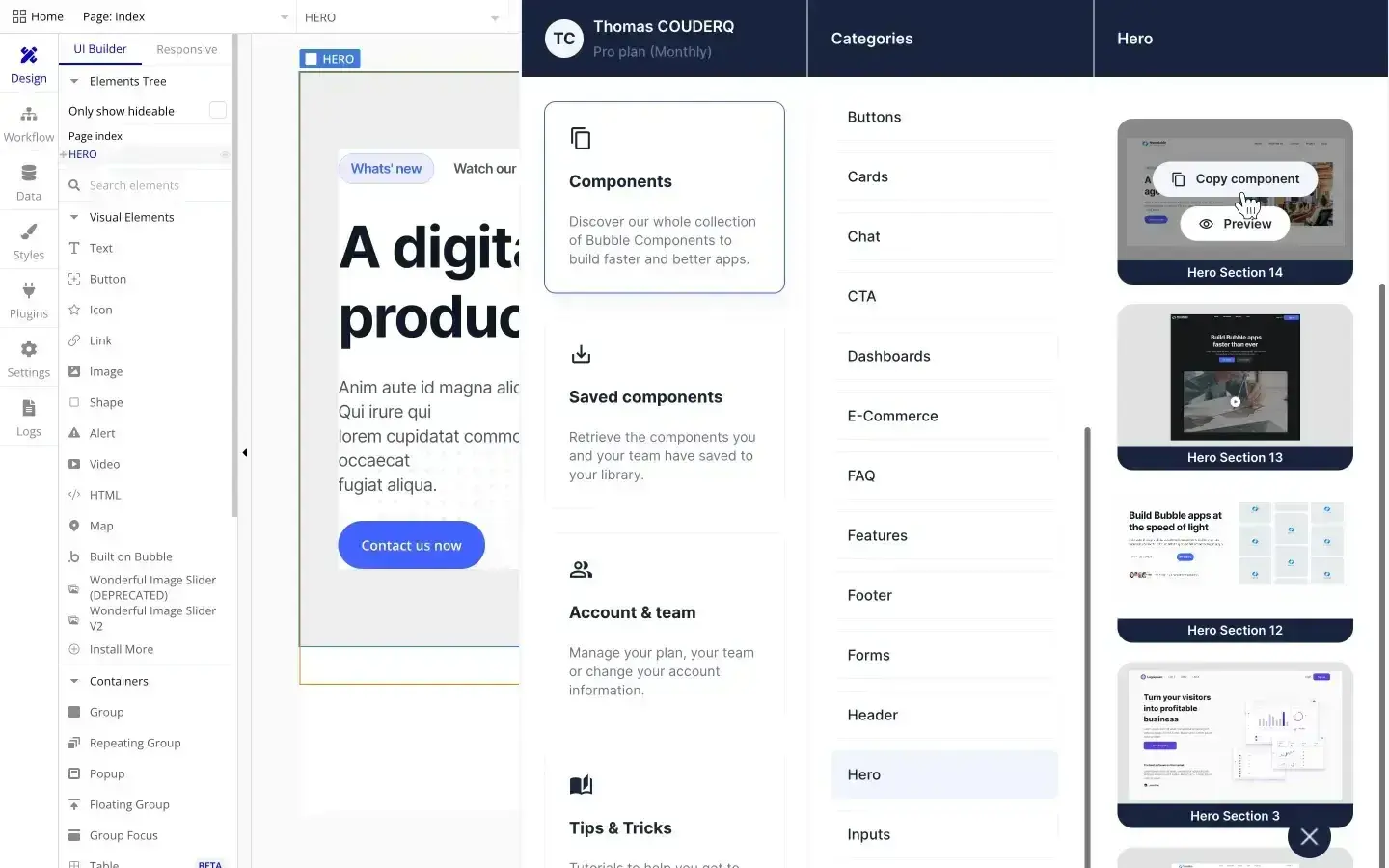
Bubble also offers an AI toolkit to make app development a more efficient, hassle-free, and powerful experience. Here are a few AI-powered tools you can use:
- AI-powered recommendations for building features.
- Share descriptive prompts to let AI generate landing pages from scratch.
- Prioritize features based on an effort score generated by its AI model.
The tool also has an AI page designer that creates landing pages using a combination of pre-built templates and your input. And let’s not forget that you can connect it to over 300 AI plugins.
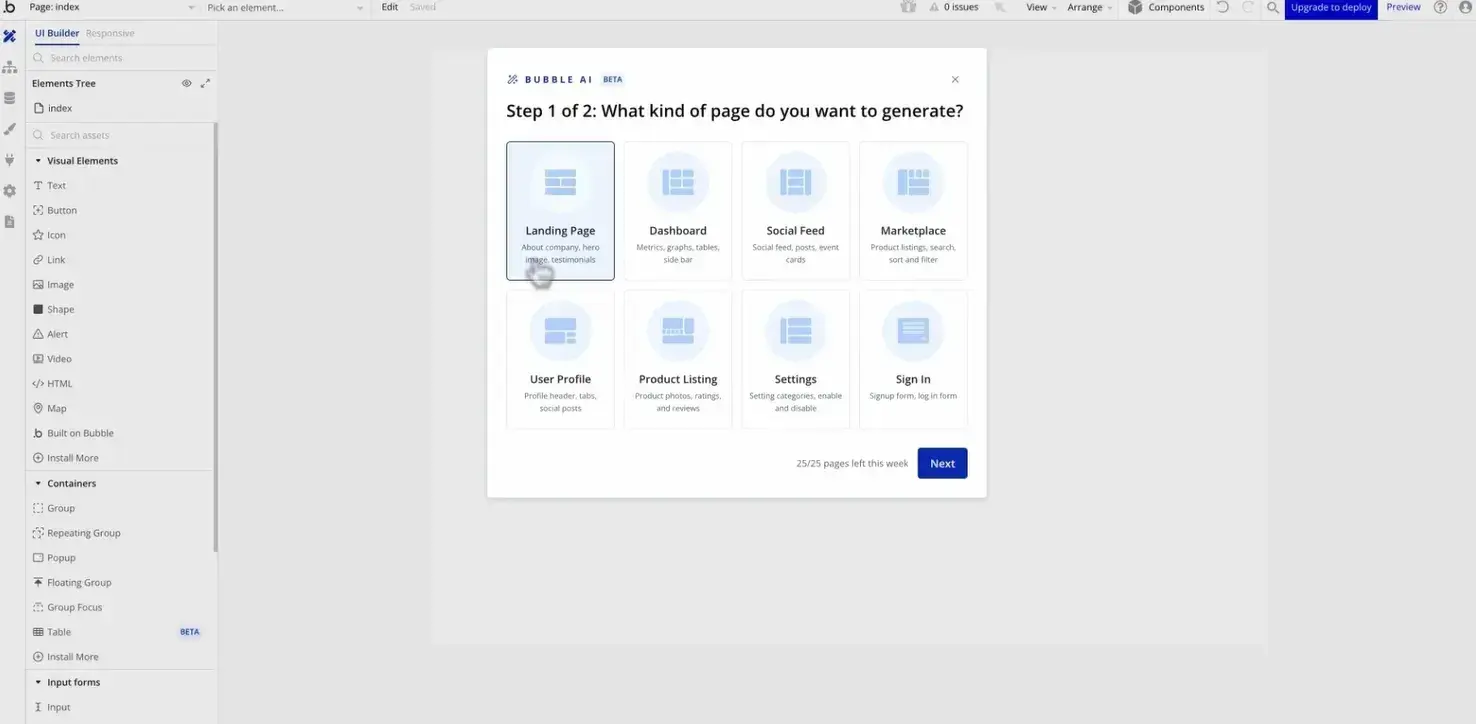
You can also choose to incorporate logic into workflow programs to determine what happens as users go through your application and click on different elements.
Lastly, Bubble integrates readily with any service that displays the REST API. These integrations include Facebook, Google Analytics, SQL, and many payment applications.
Why I Recommend
- Handles deployment and hosting for you
- Dynamic containers and a comprehensive library of visual elements for adding real-time interactivity into your apps, like chats and news feeds
- Extension options with JavaScript plugins and APIs
Things to Consider
- A learning curve is required to understand complex features
- Limited flexibility since you can’t export an app’s source code
6 Quill: Best for Quick Customization and Versatile Compatibility
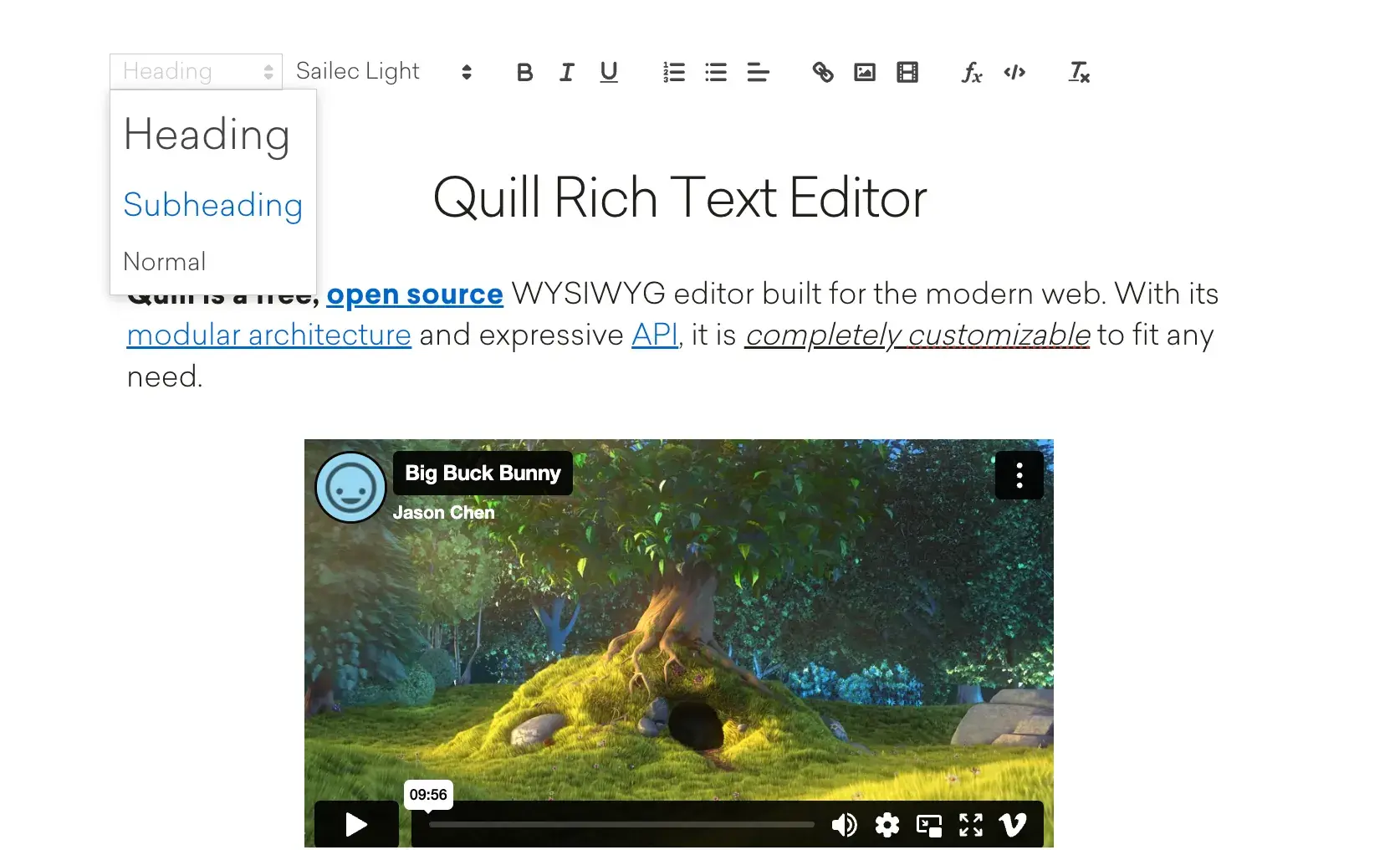
Quill is a free, open-source WYSIWYG editor built with extension and customization in mind.
Thanks to its modular architecture and expressive API, you can start with Quill core. Then, customize its modules or add your own extensions to this rich text editor as needed.
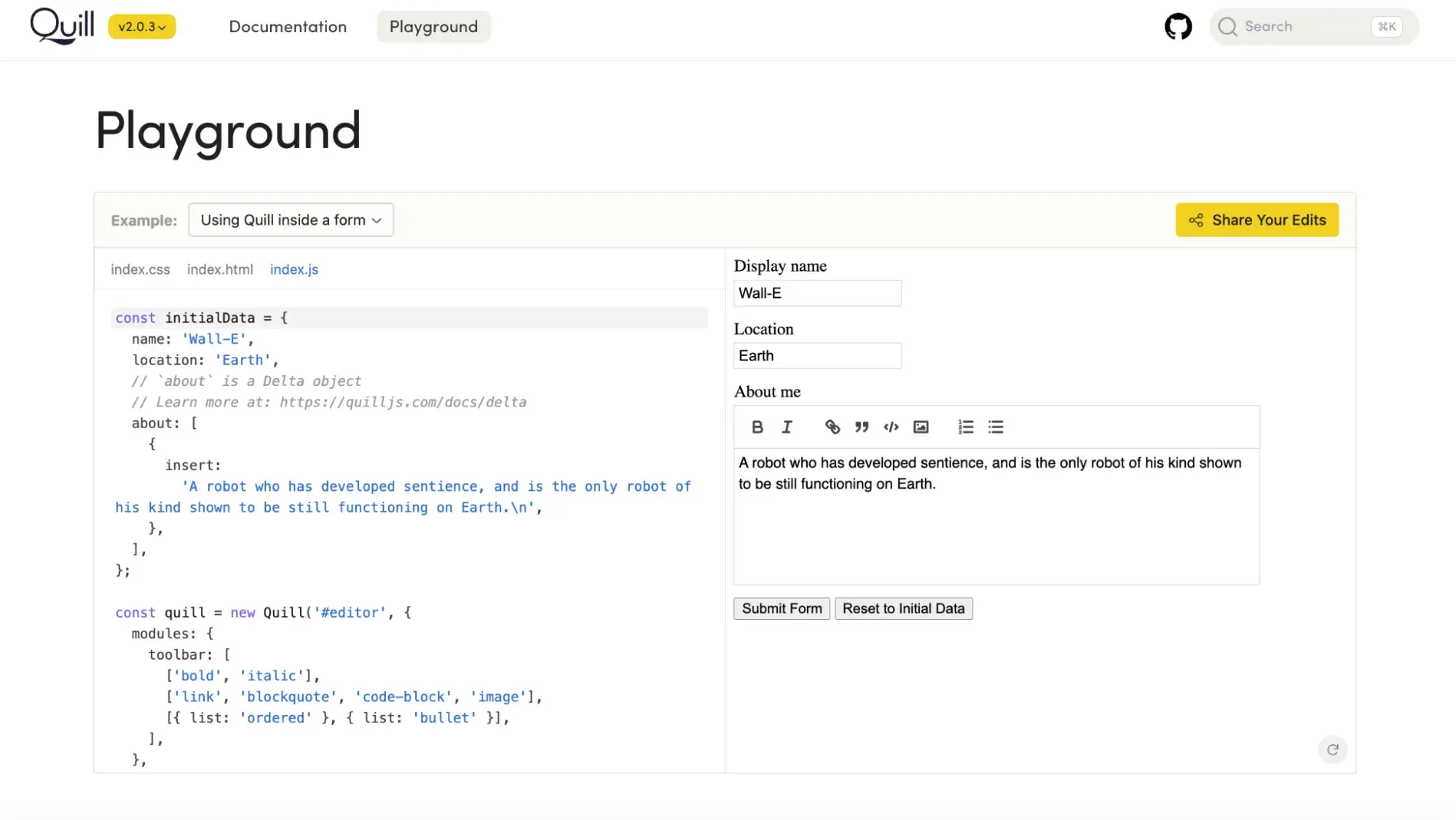
The tool lets you adjust the look of the editor easily, which you can personalize with plugins or by overriding rules in its CSS stylesheet.
Quill also supports any custom content and format, so you can add embedded slide decks, interactive checklists, 3D models, and more. Since the editor can support richer and more interactive content, it’s used for small projects and giant Fortune 500 companies alike. What’s also noteworthy, in my opinion, is that it’s a cross platform editor, which works well on all phone, tablet, and desktop browsers.
Why I Recommend
- Fully customizable via its modules and expressive API
- Can represent content as JSON, which is easier to process and convert to other formats
- Offers two themes for quickly and easily changing the visual look of the editor
Things to Consider
- Lacks advanced formatting and editing features when compared to other tools
- Doesn’t offer real-time collaboration capabilities
7. Summernote: Best for Simplicity and Ease of Use
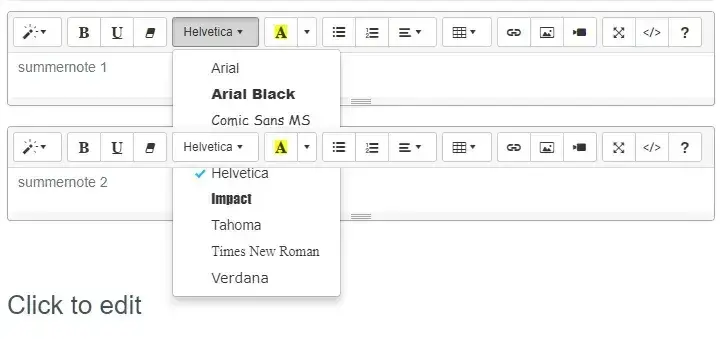
Summernote is a simple WYSIWYG editor that you can load with Bootstrap and jQuery or jQuery only.
Once configured and installed properly, your Summernote rich text editor will include buttons. These can help you add an image, link, video, or table, change the font names, sizes, and formatting, and more.
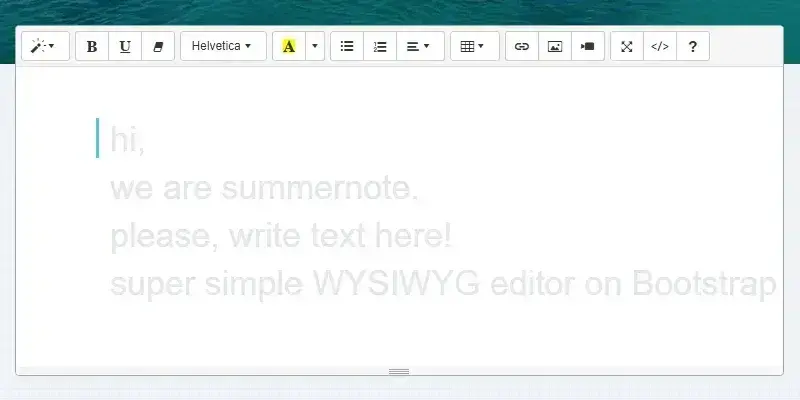
You can customize and extend this editor with modules and plugins. For example, you can customize the toolbar, set the breaking level of block quotes, pick custom font size units and line heights, and much more.
Why I Recommend
- Multiple install options — you can download the compiled CSS, JS, source code, or fork/clone it on GitHub
- Customizable via modules and plugins
- Can be used with other frameworks like Django, Ruby on Rails, AngularJS, Apache Wicket, Webpack, Meteor, or a PHP backend
Things to Consider
- While, in my opinion, it’s great that the editor has a very familiar, almost Microsoft Word-esque feel, it also has limited customization options when compared to feature-rich editors
- Doesn’t support syntax-based or markdown editing
8. ContentTools: Best for Flexibility and Extensibility
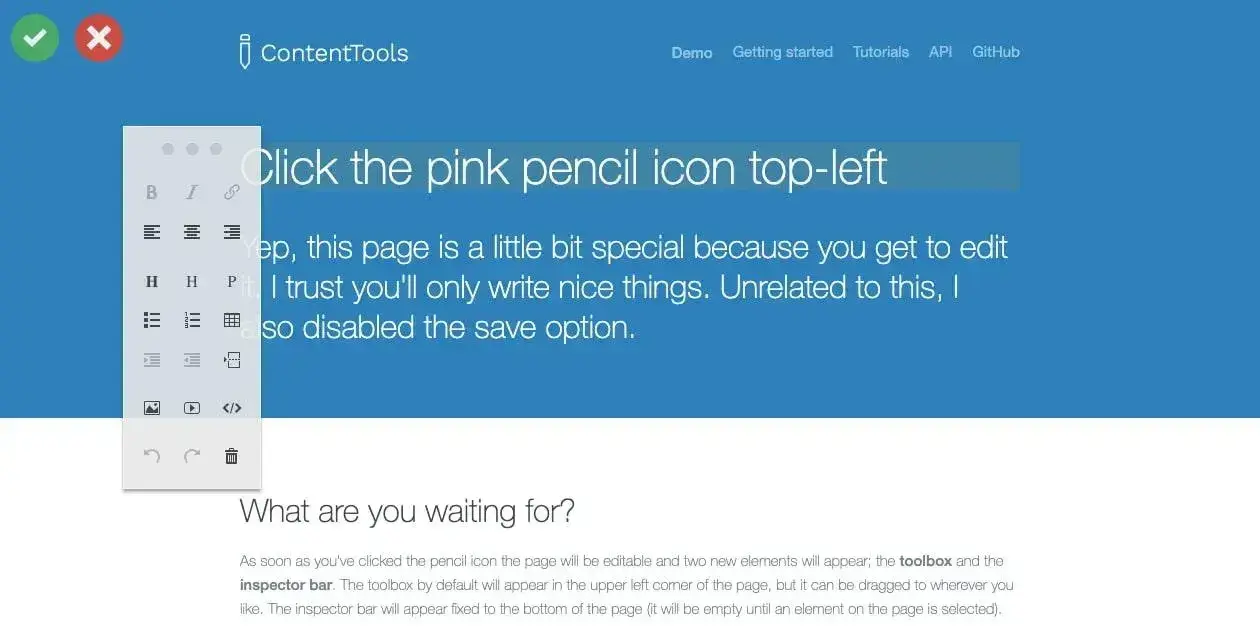
ContentTools is an open-source WYSIWYG editor you can add to any HTML page in just a few steps.
Once added, you’ll see a pencil icon on the HTML page. When clicked, a toolbox and inspector bar appear. Using these two elements, you can edit, resize, or drag and drop text images, embedded videos, tables, and other content within the page.
You can use the ContentTools editor out of the box. It’s also easy to customize it to allow only certain regions of the page to be editable and to specify which CSS styles users can apply to elements.
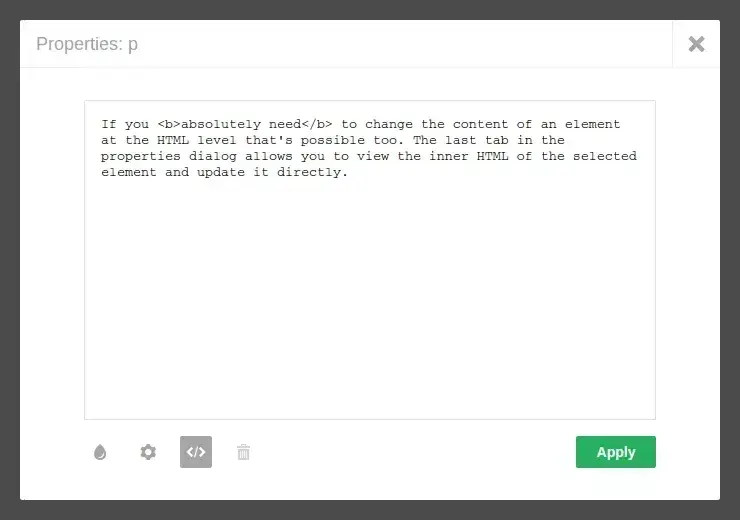
This drag-and-drop editor is great for beginners without core design skills. You can use this HTML editor like a no-code website builder and create pages quickly.
Why I Recommend
- Install the editor on any HTML page in a few easy steps
- Can control which regions of the page are editable
- Can extend by adding tools
Things to Consider
- Doesn’t offer cloud storage compatibility out of the box; requires some workarounds with data storage SaaS platforms
- Limited and basic styling capabilities using predefined classes
9. Brackets: Best for Front-end Web Development and Design
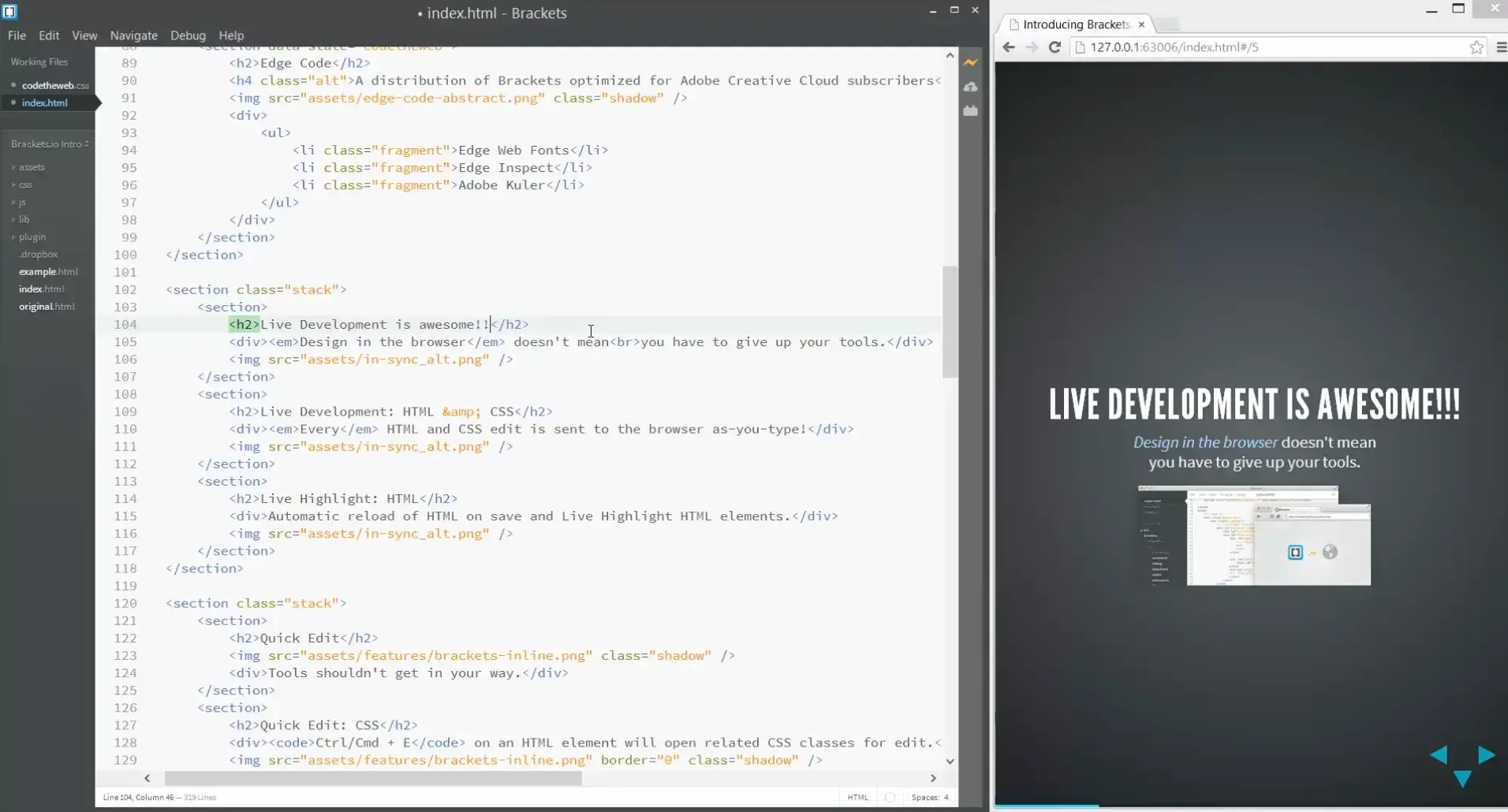
Brackets is a lightweight open-source editor that began as an Adobe project. It's simple to use and customize, with a wide range of extensions and plug-ins.
One of Brackets’s most popular features is the live preview, which lets you see HTML and CSS code changes as you make them. You can use the inline editor to avoid switching between different tabs, and by going to a specific line, you can instantly preview any part of your page or code.

I liked that this tool simplifies the coding process with its “Working Files” list on the left panel. Instead of moving between tabs, this editor lets you quickly move between and edit different files on the list.
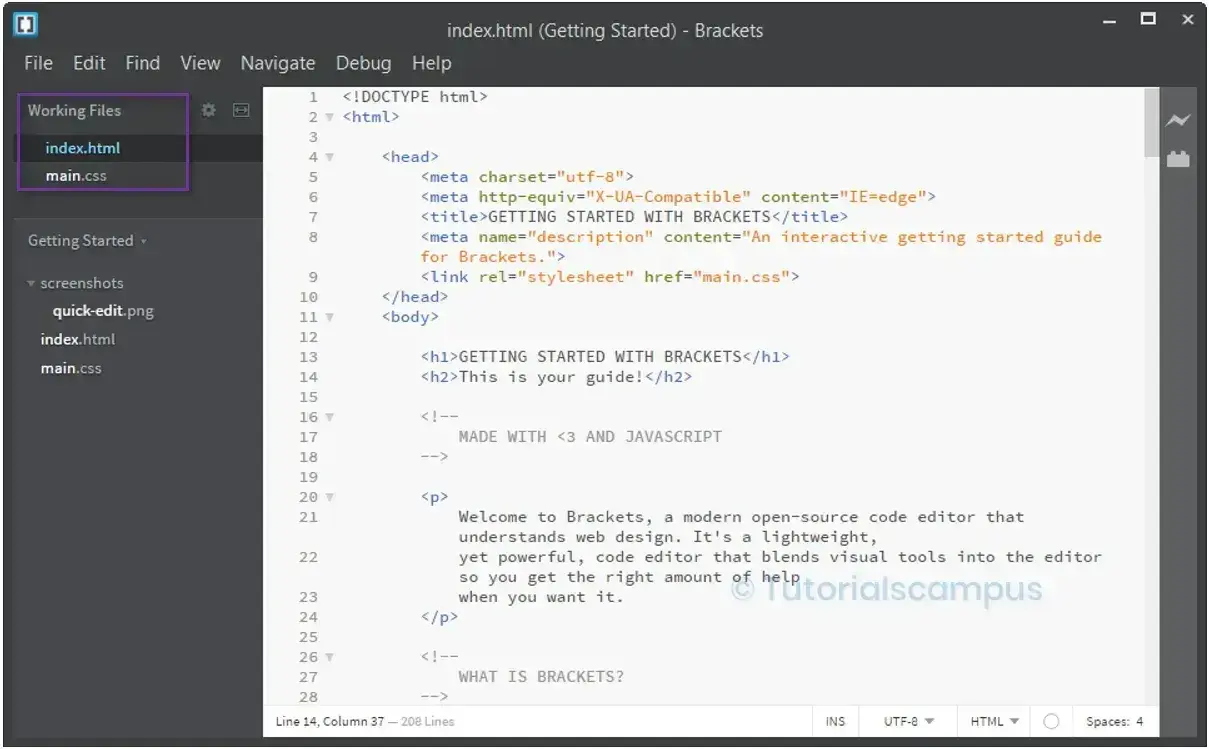
Why I Recommend
- Unique preview and inline features that streamline the coding process
- Good extension ecosystem with tools like Git, Emmet, Beautify, etc.
- Modern design for ease of use
Things to Consider
- The platform is no longer supported by Adobe, making some of its UX/UI feel outdated. The team currently operating Brackets recommends upgrading to Phoenix Code, which they describe as Brackets’ natural successor, offering more advanced, modern features
- Managing extensions is clunky and not seamless
10. Vev: Best for Integrating Design and Development Seamlessly
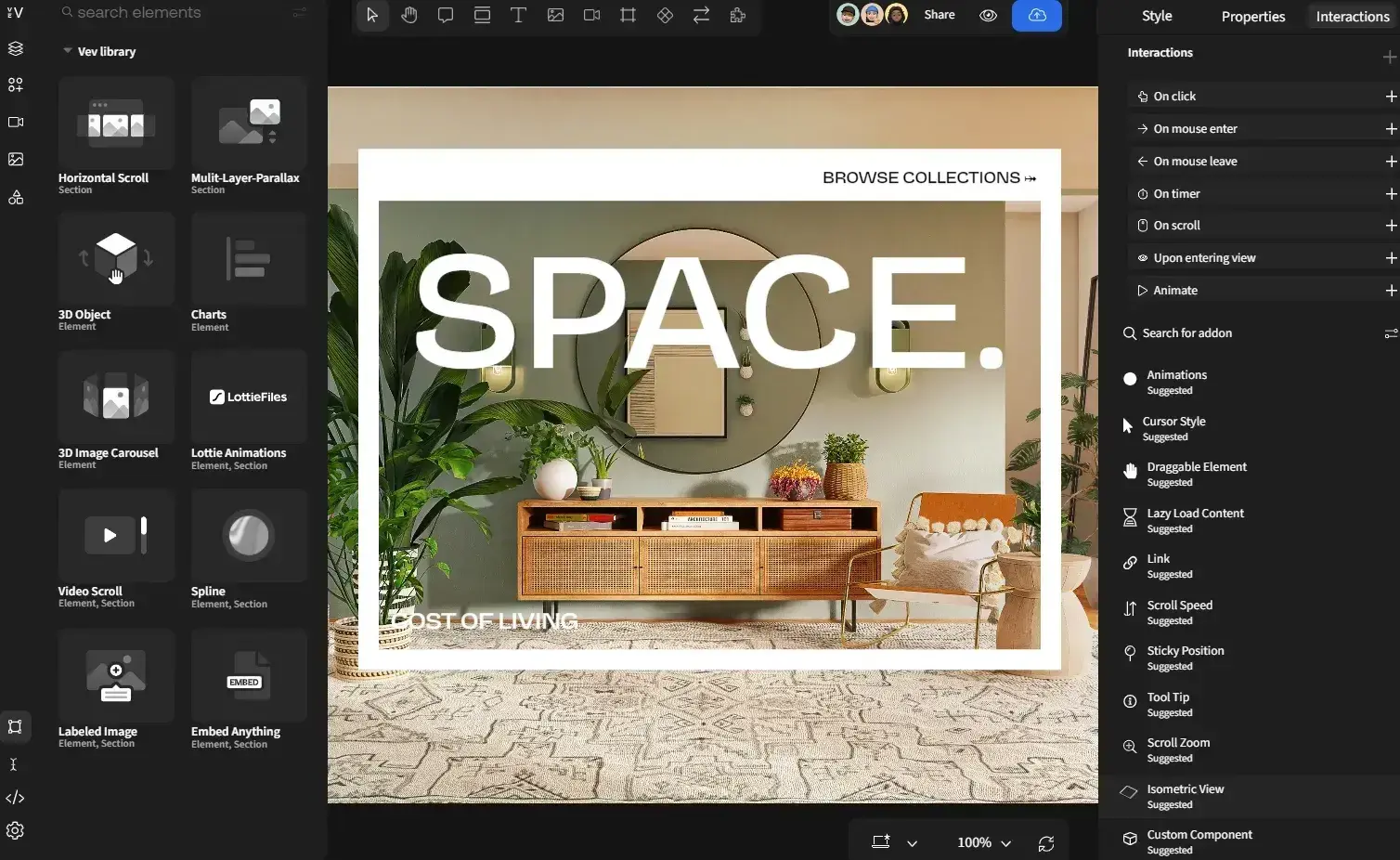
Vev is designed for developers, designers, and marketers alike. This platform masterfully blends editing tools for no-code and code use cases. It integrates with tens of CMS and design tools, including Figma, WordPress, Optimizely, and Contentful.
I would say it's the tool you turn to when you don’t want your creativity boxed in by traditional web development constraints.
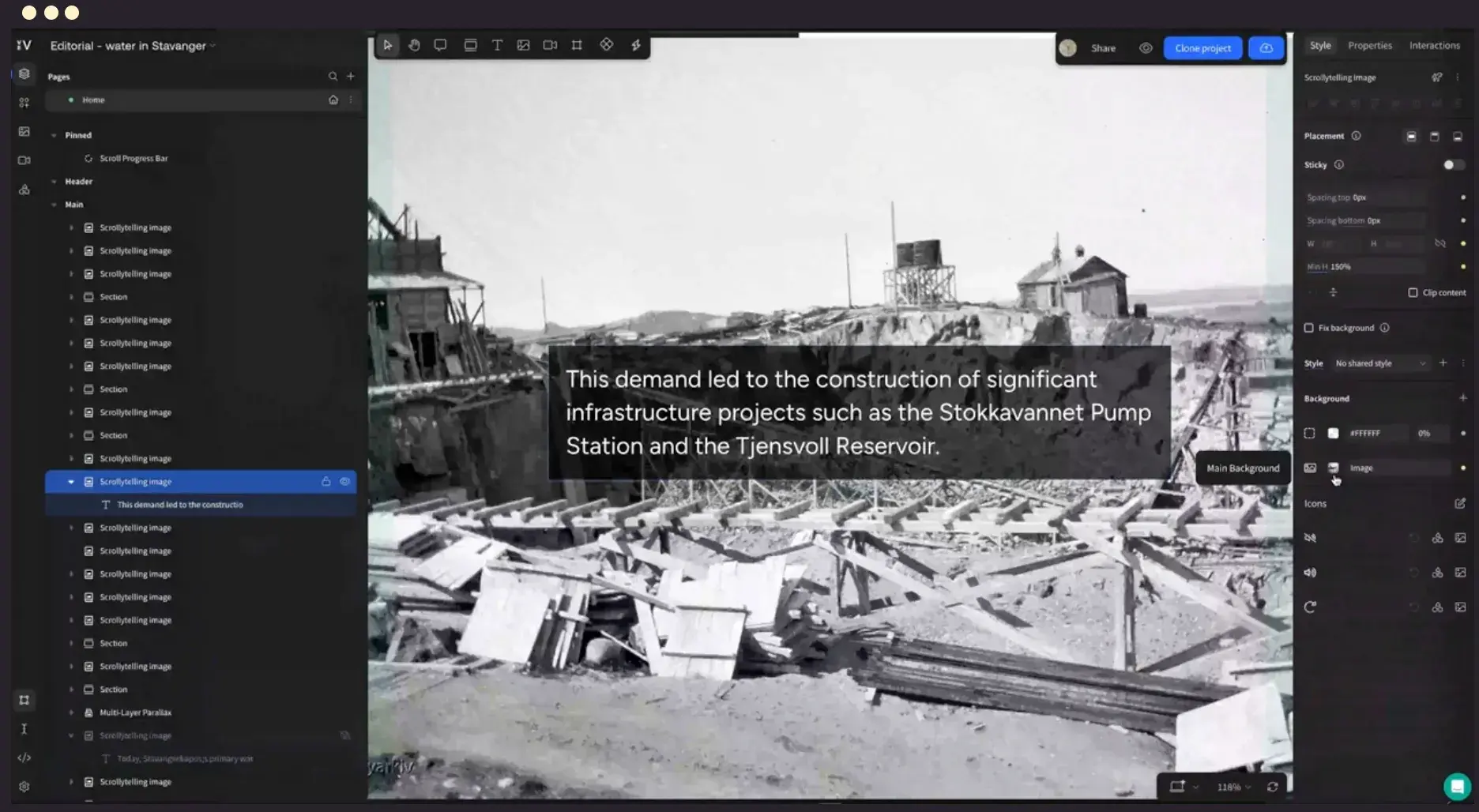
With Vev, you can bring the most ambitious web concepts to life. It stands out for giving both creative and technical minds equal playgrounds.
Designers can unleash their creativity without hindrance, while developers can dive deep into the code, ensuring that every pixel and function aligns with the project's vision.
Interestingly, Vev offers a well-structured library of learning resources. You can browse these mini-courses, how-to guides, and tutorials to understand the platform. This learning hub makes it easier for users of different skill levels to fully adopt the tool.
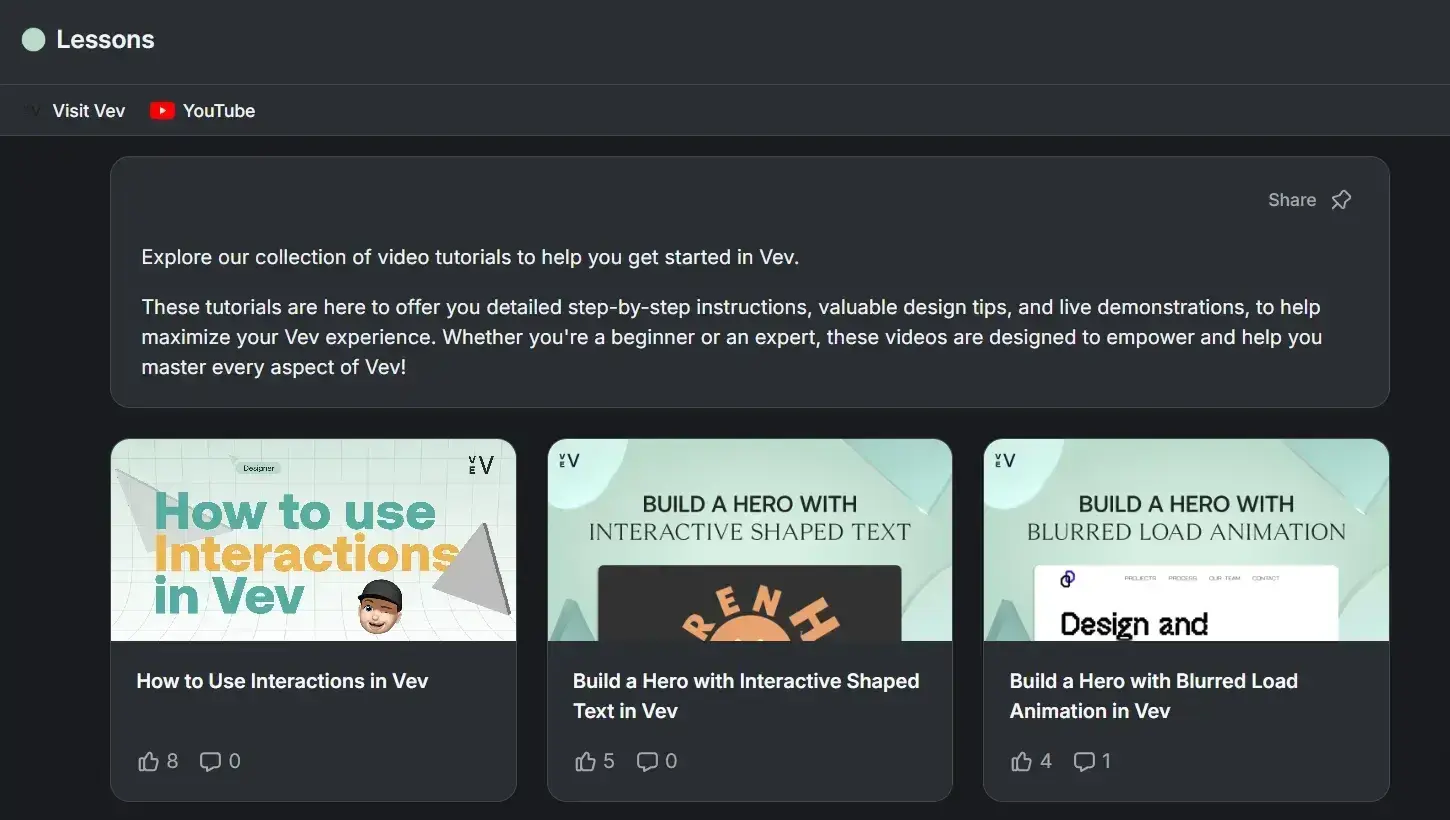
Why I Recommend
- Designed to boost SEO and performance metrics, ensuring that your content is not only visually appealing but also ranks well on search engines
- Lets you bring your Figma-based designs to life with Vev's Figma Import and integrate Vev-based content into WordPress
- Sets global styles for typography and design elements and maintains a cohesive look across your creations
Things to Consider
- Lacks a strong content management system
- Live preview is optimized for specific browsers; not ideal for everyone
1. Adobe Dreamweaver CC: Best for High-Level Backend Web Development
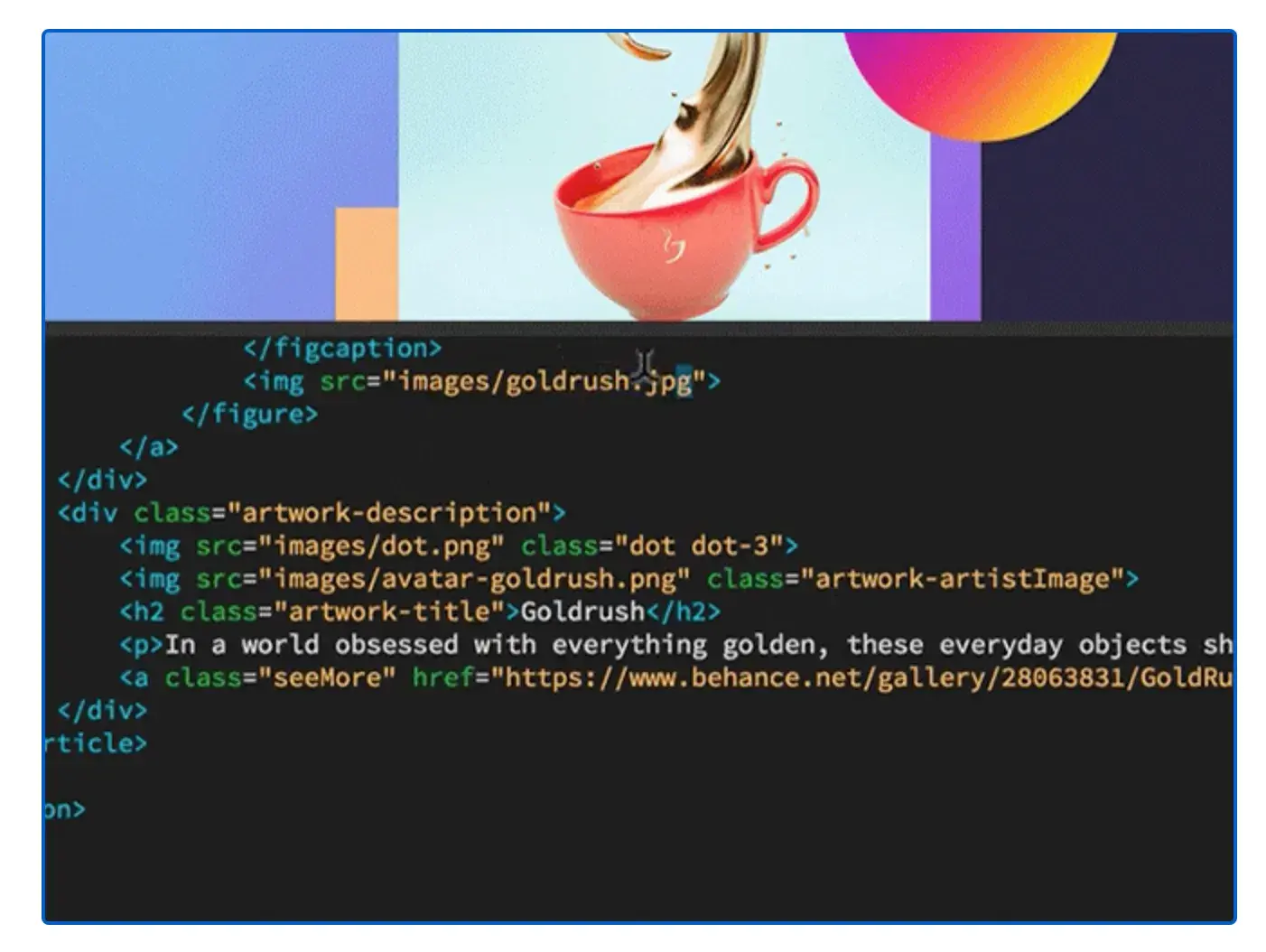
Adobe Dreamweaver CC is a code editor that can handle CSS, PHP, XHTML, JSP, JavaScript, and XML development. It comes with a fluid grid layout and a multiscreen preview panel. These features help developers fix various screen compatibility issues.
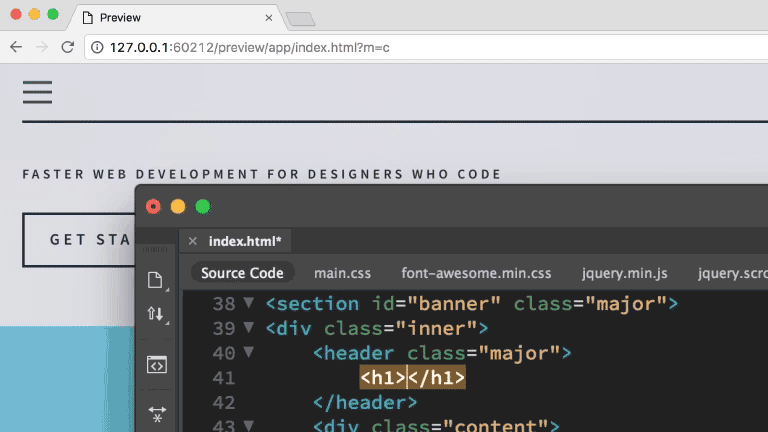
With built-in templates, layouts, and an easy-to-use interface, Dreamweaver makes designing a website relatively simple.
I think the learning curve can be intimidating for beginners, so it's best suited to professional web developers and designers. However, Adobe's tutorials can help beginners get started.
Dreamweaver CC is part of the Adobe Creative Cloud suite. So, you can pay for a Cloud account to get monthly or annual access. In 2024, Adobe released a new version of the Dreamweaver. It now features integration with the latest third-party library update, supports offline import and export of sync settings, includes various bug fixes, and resolves security vulnerabilities.
Why I Recommend
- Smart coding engine provides code hints and visual aids to learn and write code quickly
- Fluid grid layout and preview options allow you to easily build responsive websites for multiple screens
- Comes with customizable templates for HTML emails, About pages, blogs, e-commerce pages, newsletters, and portfolios
2. Froala: Best for Lightweight Customization and Website Setup
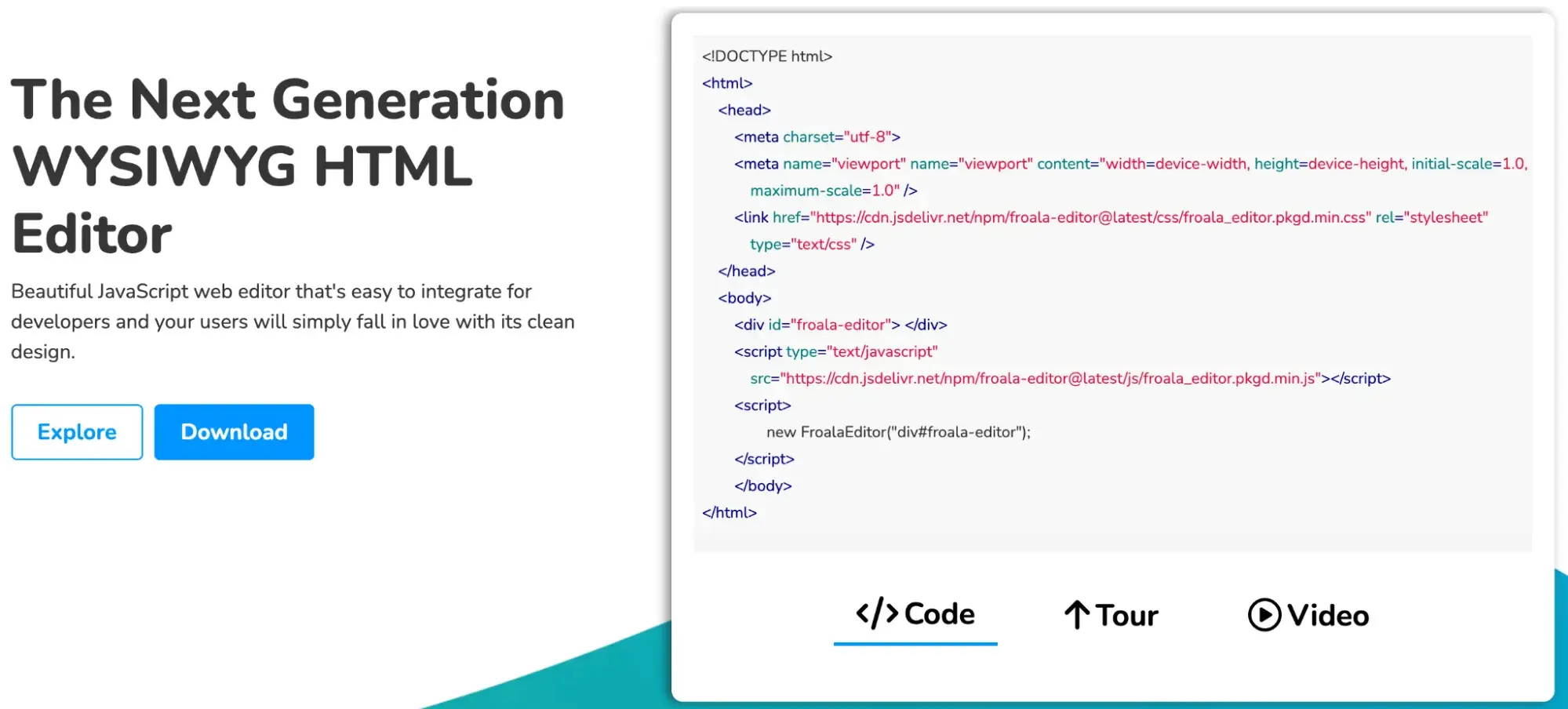
Froala is a lightweight WYSIWYG HTML editor written in JavaScript. It includes built-in rich text capabilities and extensions via Froala's API and server-side SDKs. Froala has a clean design, and I found it quite easy to set up.

This tool‘s learning curve isn’t steep. That’s why I consider it an appealing option for users who want to start working on their projects quickly.
Among development teams, Froala is a top pick because of its unique, real-time collaborative editing feature. This tool offers detailed documentation, powerful framework plugins, and many examples. This makes it simple to integrate Froala into the existing technological infrastructure.
Also, I found that the rich text editor — which initializes in 40 milliseconds — provides a great editing experience on any application. Froala claims to be one of the very few wysiwyg html editors that enables text wrapping around images and videos.
Why I Recommend
- Highly customizable via an API or SDKs
- Can choose among three types of editors — simple, rich, and full-featured — to best fit your needs and ability
- Comes with 170+ Bootstrap-based responsive design blocks to speed up your website development
4. CoffeeCup HTML Editor: Best for Making Quick Changes and Bug Fixes
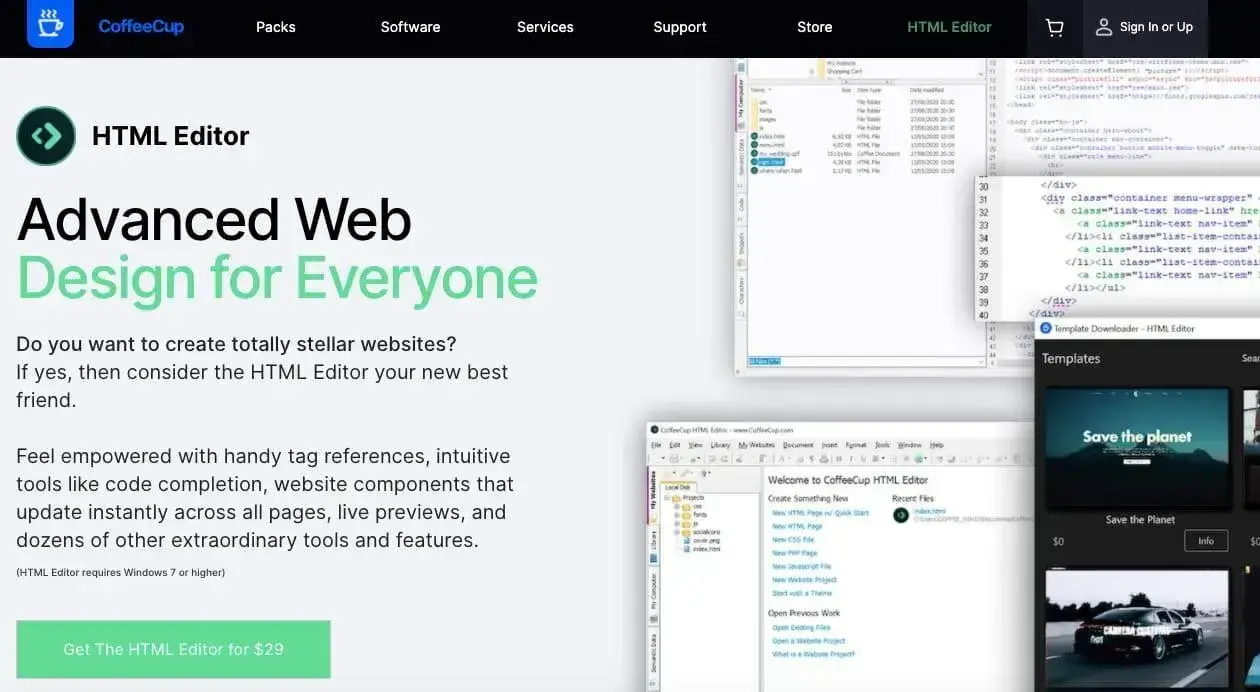
CoffeeCup HTML Editor is a feature-rich editor designed to create websites quickly. With this editor, you’ll get intuitive tools like code completion, which automatically suggests tags as you type.
This WYSIWYG editor also includes a components library where you can save elements that you reuse, like a header and footer. That way, you only have to edit those elements once to update them instantly across all pages on your site.
You’ll also get access to fully responsive templates that you can import into the editor in just two clicks. Some of them are free, while others you need to pay for. Prices vary between $19 and $29.
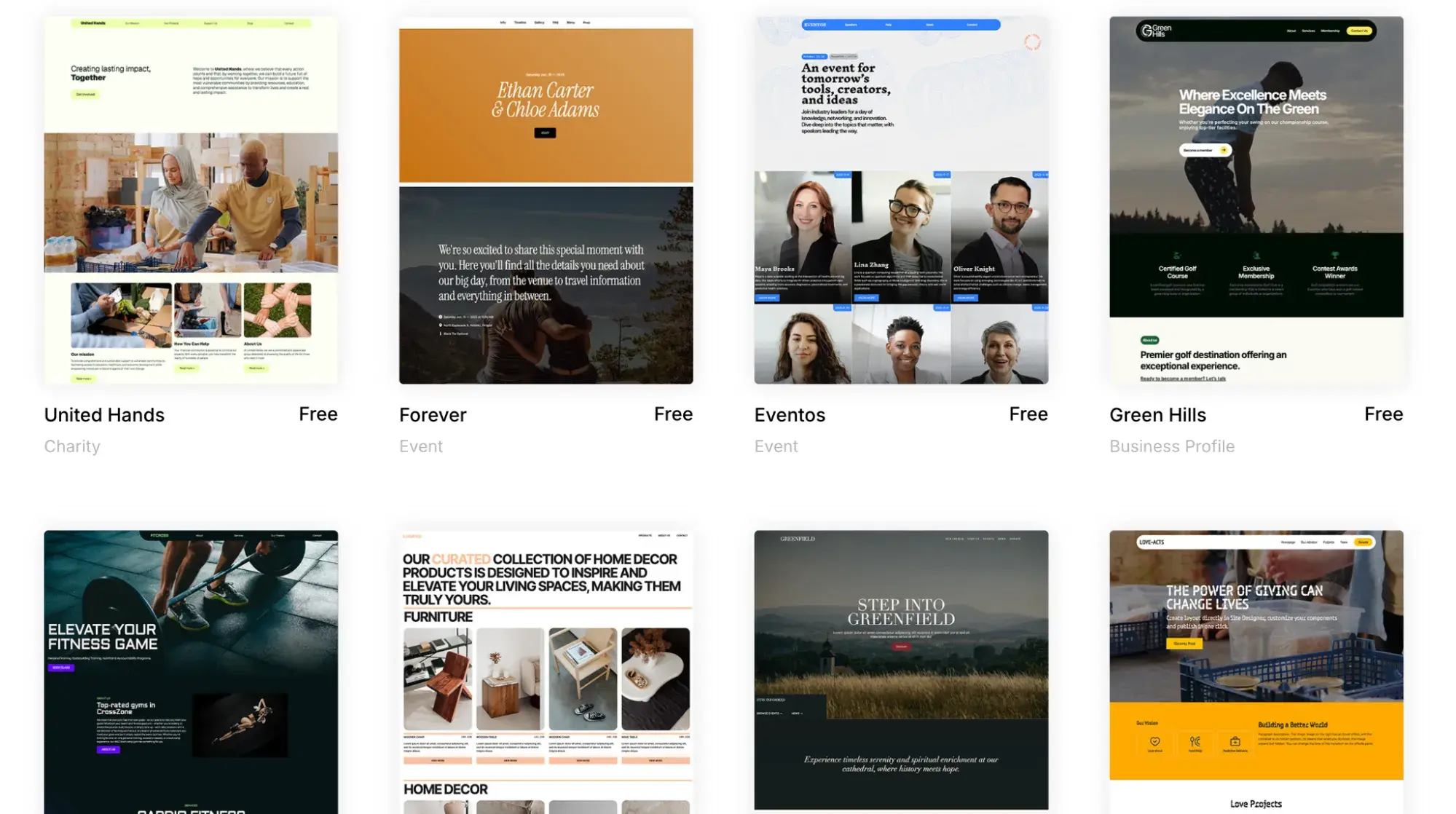
This editor gave me plenty of live preview options. I chose the split-screen preview so I could see my web page displayed right below my code.
If you prefer, you can also use the external preview to display your page in another window or on a second monitor. Either option shows you exactly what your design will look like as you work.
Why I Recommend
- Save elements in the Components Library for reuse
- Free, fully responsive templates and Template Downloader
- Split-screen and external preview options for easy review
5. AppMaster: Best for Automated Web and Mobile App Development
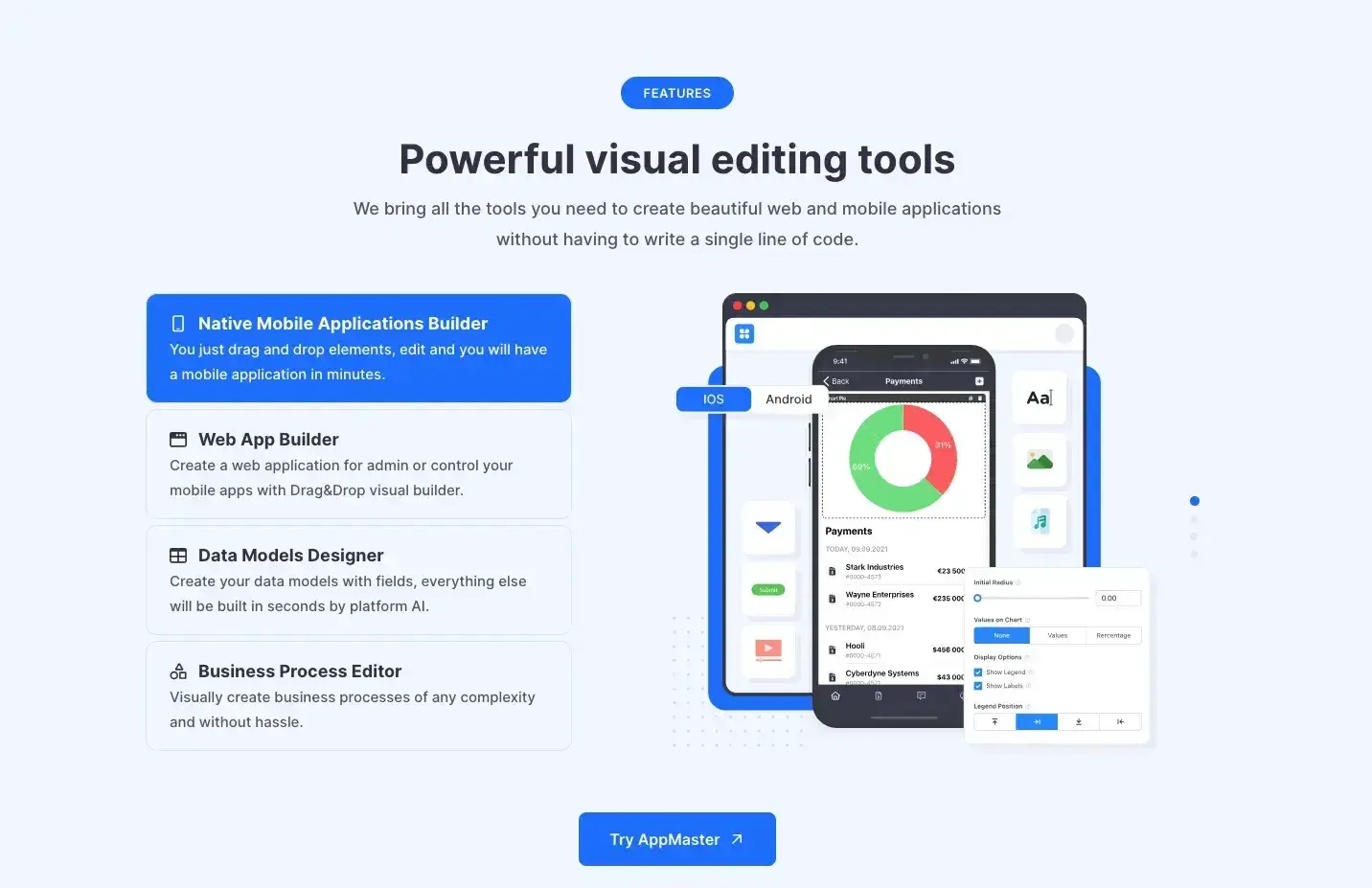
AppMaster is a cutting-edge platform that revolutionizes the way web and mobile applications are developed. Distinct from traditional code-based editors, it offers a unique approach to app creation through automation.
Here are a few features that I found particularly impressive:
- The Native Mobile Applications Builder lets you drag and drop elements to create mobile apps in minutes.
- The Web App Builder enables easy web application development for admin panels or managing mobile apps.
- Using the Data Models Designer, you can define fields, and the platform AI generates the rest instantly.
- The Business Process Editor allows you to visually design complex workflows without coding.
AppMaster is designed to cater to both novice and seasoned developers, streamlining the app development process with its powerful automation tools.
Why I Recommend
- Visual development environment
- Customizable front-end design
- Ability to automatically create backends
6. Shorthand: Best for Interactive and Visually Rich Storytelling
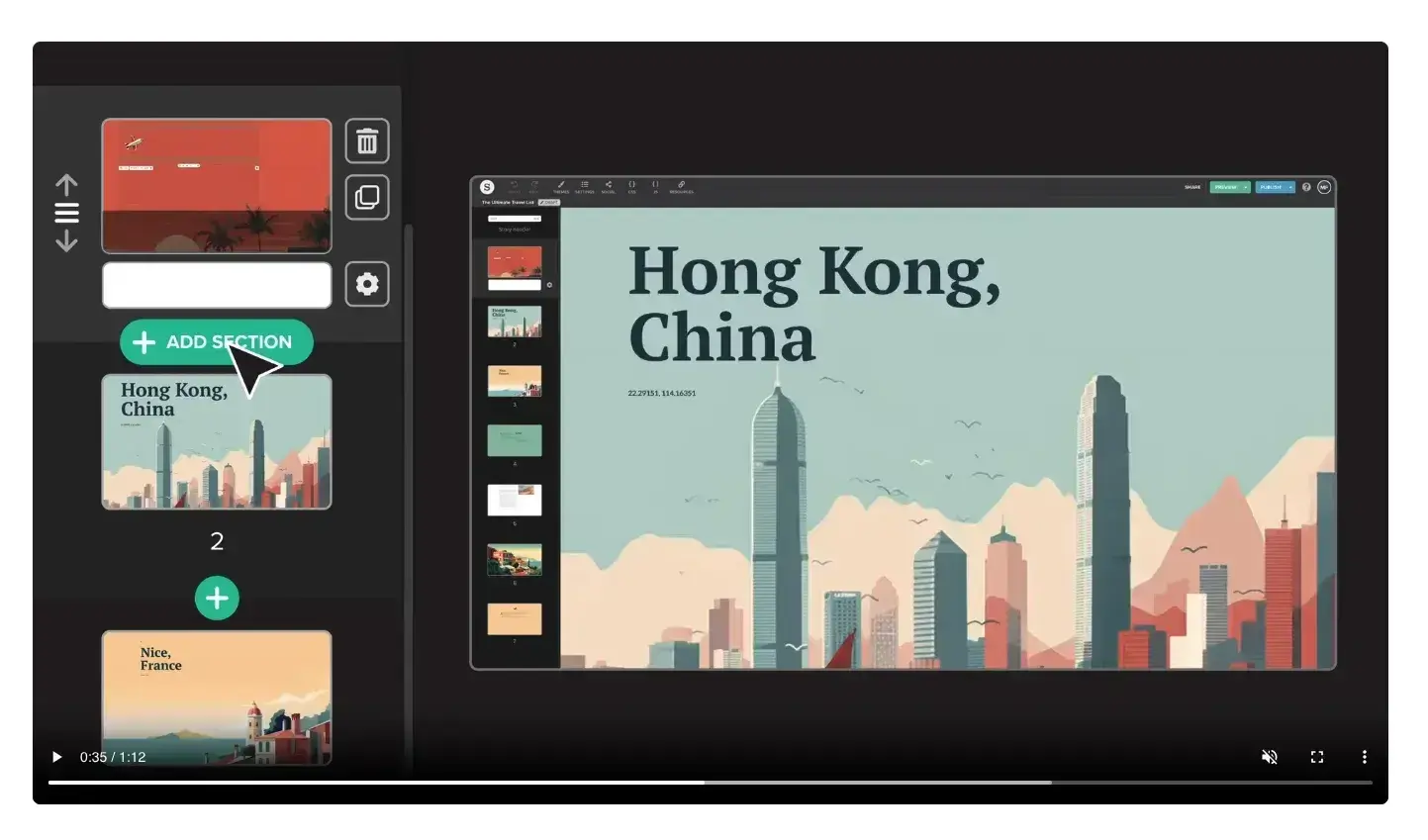
Shorthand is a standout platform designed to create immersive, visually captivating stories on the web. This tool is particularly favored by content creators, marketers, and journalists who aim to engage their audience through rich multimedia narratives. It offers an intuitive drag-and-drop editor, allowing for as much or as little customization as you need.
I found that Shorthand excels in transforming traditional text-based content into interactive, visually appealing stories without the need for extensive coding skills.
What I also really like about it is that you can work on the same story with multiple users at the same time, and all edits will be visible instantly. You can let colleagues or external collaborators view your stories before publishing to get their feedback.
Why I Recommend
- It requires no coding knowledge
- Allows the integration of various interactive elements like animations, videos, and audio
- It can integrate with your existing content management system (CMS), streamlining your workflow
7. Pinegrow Web Editor: Best for Responsive Web Design and Editing
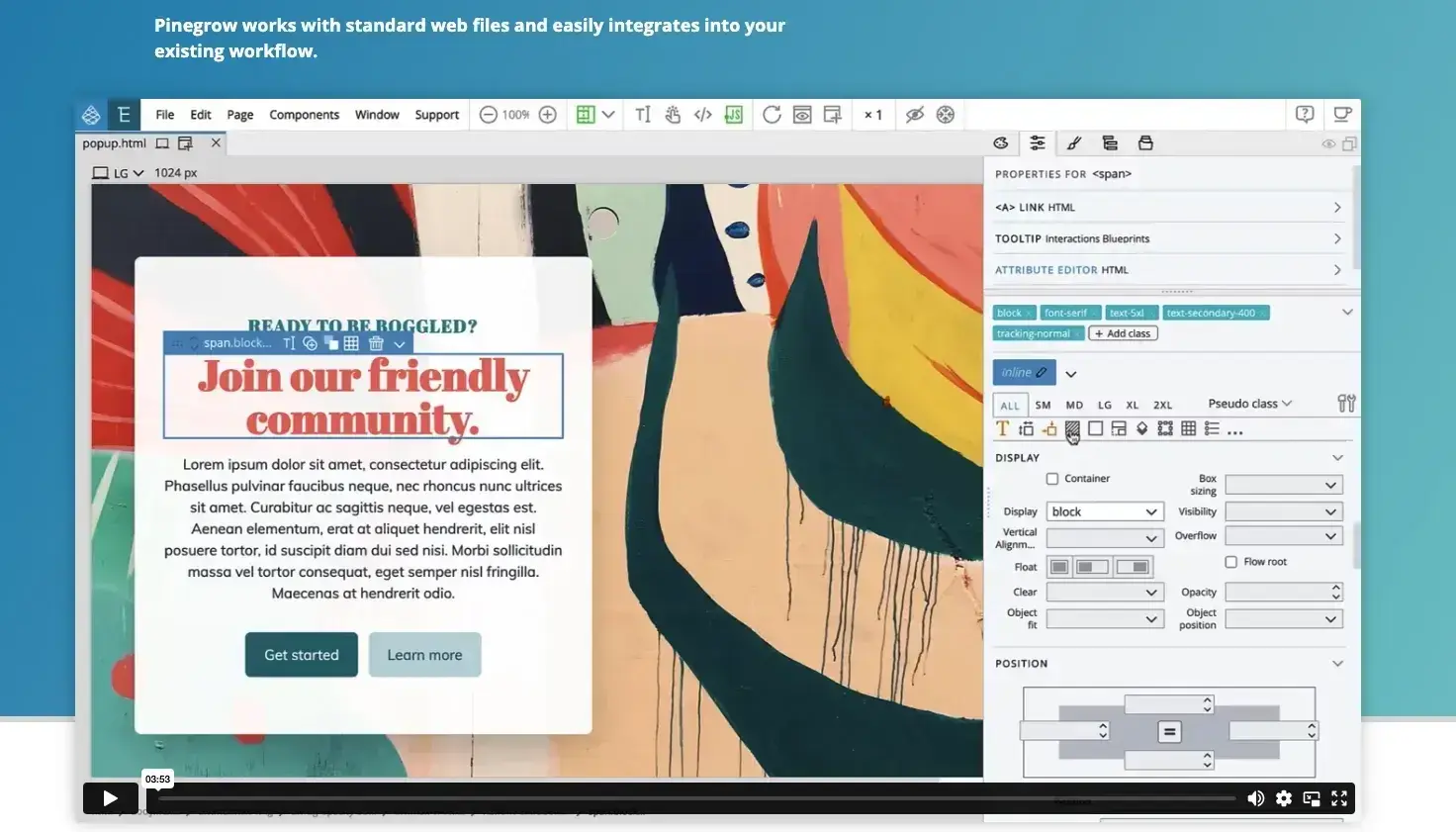
Pinegrow is a powerful web editor that offers robust features catered to responsive web design. It’s a go-to tool for both front-end developers and designers who seek an efficient way to build and edit websites.
In my opinion, what makes Pinegrow stand out is its ability to work with live multi-page editing, CSS & SASS styling, and smart components for Bootstrap, Foundation, and WordPress.
Depending on your preferences, you can use it as a desktop app or use the self-hosted, WordPress plugin option. What I find particularly noteworthy is that the team behind Pinegrow seem to be prioritizing AI integrations. You can use an AI assistant for tasks such as bulk image editing, automating HTML component and WordPress block creation, and modifying Tailwind CSS styles.
Why I Recommend
- You can easily edit CSS rules or write SASS
- The drag-and-drop feature that simplifies the design process
- Allows you to edit multiple pages at the same time, providing a real-time view of how different pages interact and respond
8. UCoz: Best for Versatile Website Building and Customization
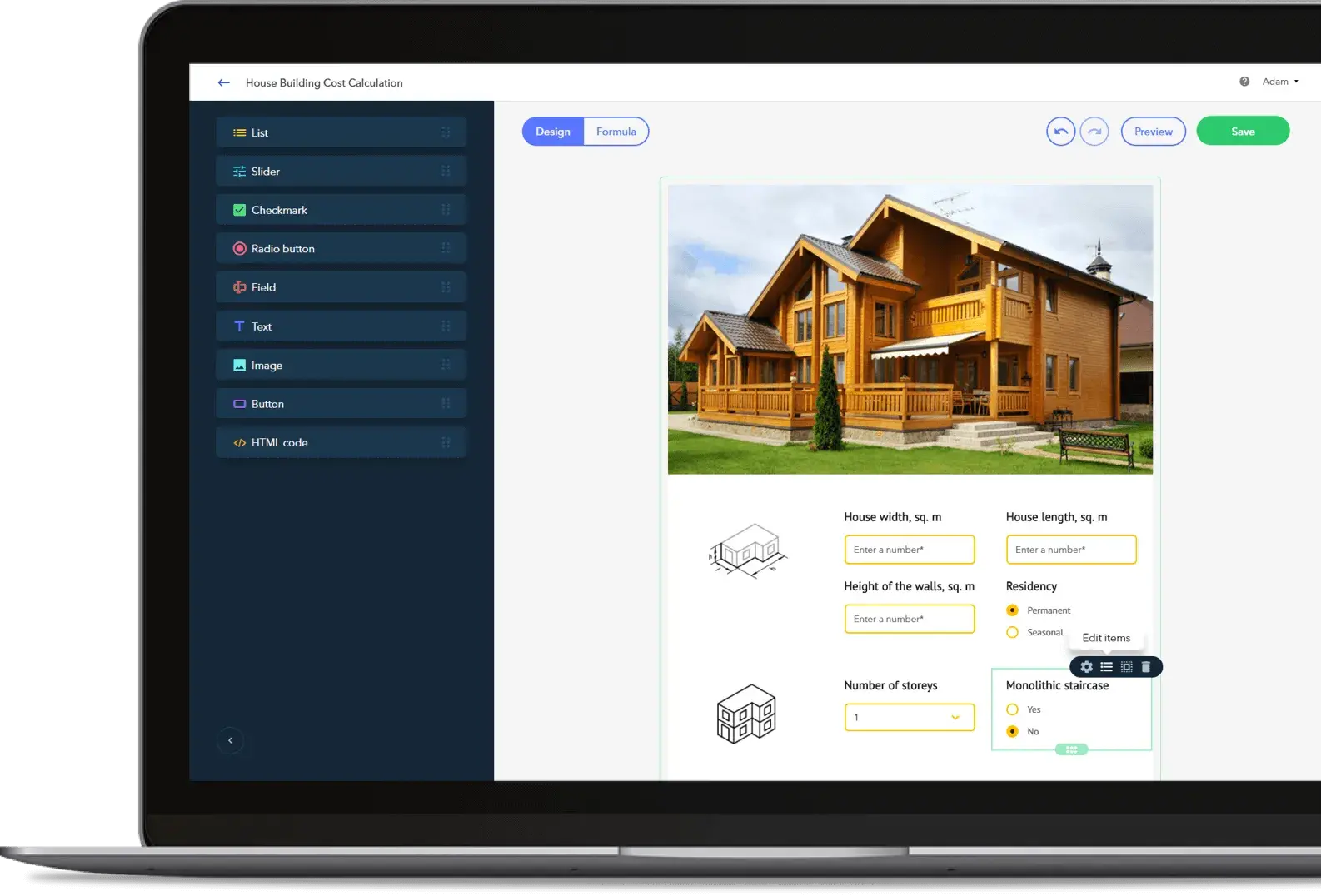
uCoz is a versatile web-building platform that caters to a wide range of users, from beginners to advanced webmasters. It’s a popular choice among marketers, designers, and developers, with about 1.2 million active sites made using this WYSIWYG builder.
I believe that a big part of why it’s so popular is that it offers a mix of user-friendly website creation tools and advanced customization options. Starting off with uCoz is easy – you can select a ready-made template or create a page from scratch. If you need any custom adjustments, you can apply them in the code and see the changes applied in real time.
This website editor is ideal for creating blogs and personal websites, as well as commercial sites (through uKit, uCoz’s dedicated web builder for businesses).
What’s great about uCoz is that you can start off with a simple template, and then customize it with code if need be.
Why I Recommend
- Easy for beginners to use
- Advanced customization with code access
- Integrated ecommerce features
9. Webflow: Best for Professional Web Design and Development
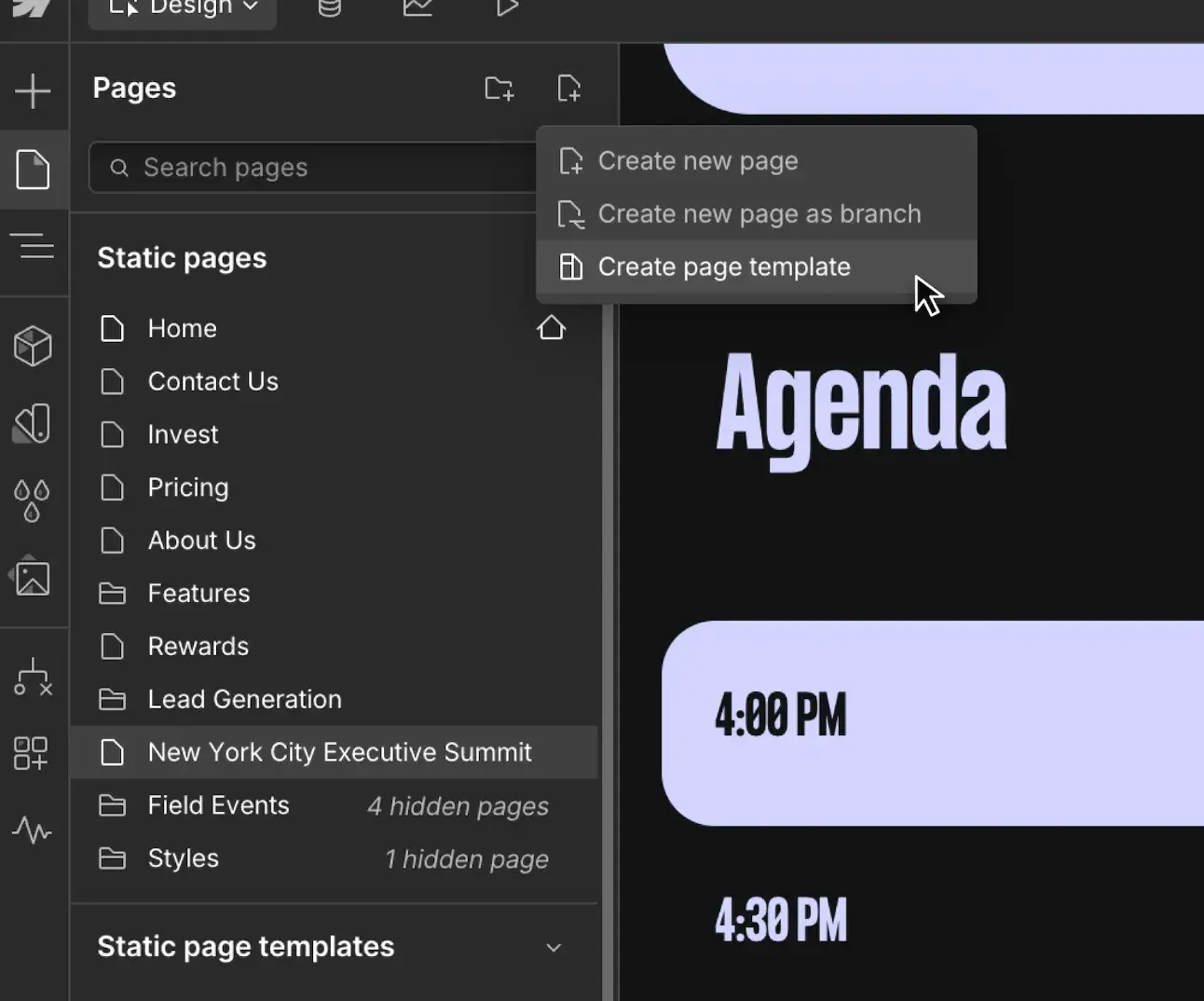
The chances are high that you’ve already heard about Webflow. It’s one of the most popular WYSIWYG editors and no-code platforms out there and has been getting a lot of press in recent years. I’ve collaborated with a few designers who use it, and they told me it’s the best WYSIWYG editor they’ve used so far. One of the reasons is that they can easily import their Figma-based designs.
For me personally, Webflow stands out for its visual canvas, allowing intricate design customization while automatically generating HTML, CSS, and JavaScript.
Why I Recommend
- CMS and ecommerce integration
- Advanced interactions and animations
- On top of the website builder, Webflow also offers comprehensive hosting solutions
10. Hostinger: Best for Web Hosting and Building User-Friendly Websites
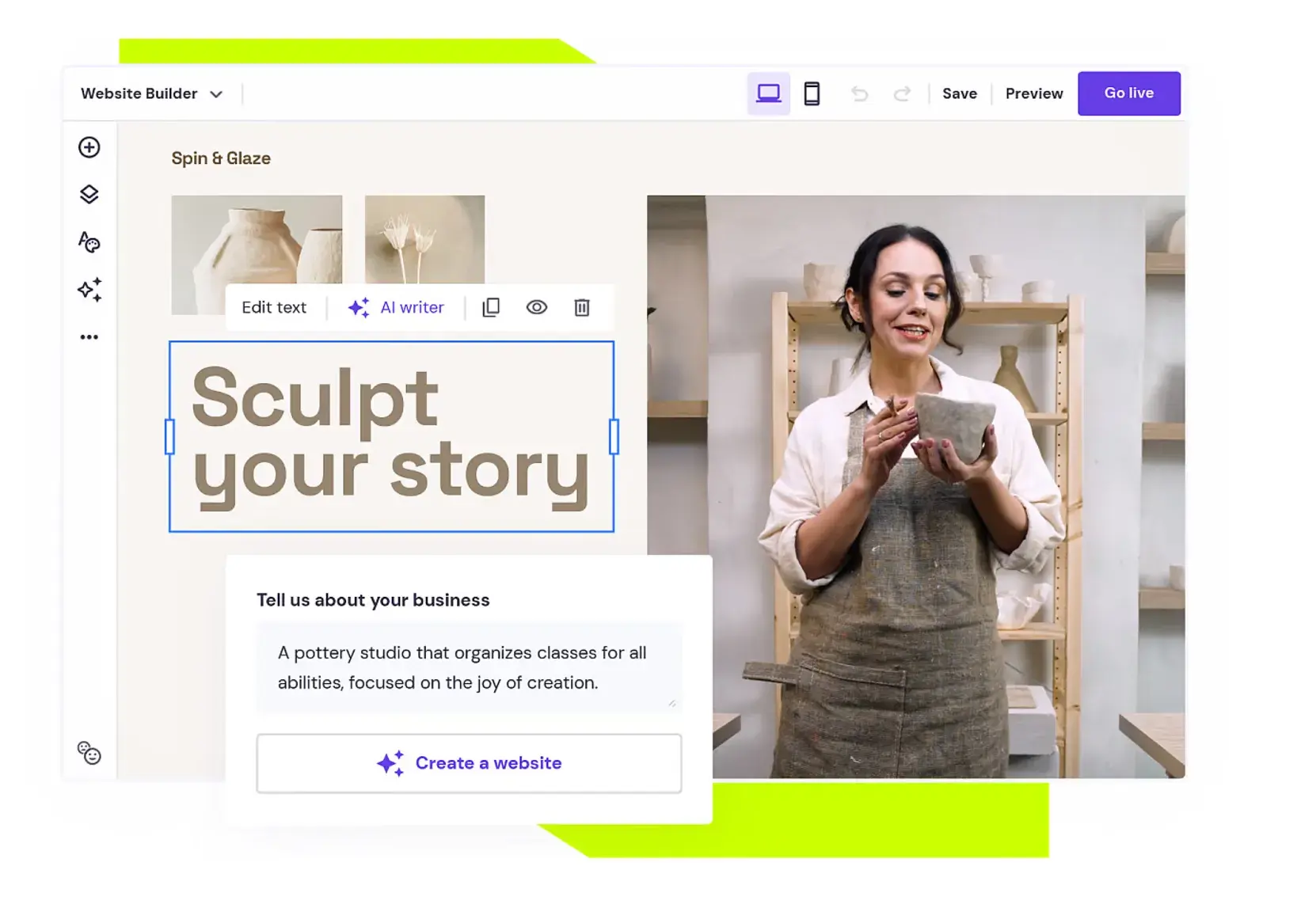
Hostinger is renowned in the web hosting industry for its affordable and user-friendly web hosting services. It's a top choice for individuals and businesses looking to host their websites reliably and efficiently. Plus, when you subscribe to the website builder, you also get the website domain for free, which I’d say is a nice touch.
Hostinger stands out for its easy-to-use interface, fast loading times, and excellent customer support, making it a preferred option for those starting their website journey or looking to switch hosting providers.
Why I Recommend
- Affordable Plans – not only on their website builder but also hosting services.
- Fast loading times
- WordPress and WooCommerce optimized hosting.
5 Key Benefits of a WYSIWYG Editor
Don’t just take my word for it.
Before investing in a good WYSIWYG editor, you should consider whether it’s worth spending all that money. Evaluate the pros and cons first.
Here are five ways a good WYSIWYG editor can help you.
Greater Convenience
One of the most obvious benefits of using a WYSIWYG HTML editor is the ease of web development. This editor streamlines the content creation process. That’s because you don’t have to switch back and forth between an editor and the staging preview mode. You can format text, insert images, and adjust layouts in real time, seeing exactly what the final result will look like.
As a result, you can save time and create new pages quickly without constantly checking your code. What I appreciate about this is that it allows me to focus more of my time on creating a standout final product.
Consistent Formatting
Several WYSIWYG HTML editors offer style presets to bring more consistency to your design. These styles follow a uniform pattern of colors, fonts, spacing, and other formatting rules.
What I like to do is create my own templates to build brand consistency. This eliminates inconsistencies that inevitably show up in manually coded sites. This one is another huge time-saver but also helps keep the branding consistent. Plus, it ensures that every page maintains a professional look without any extra effort. Having a structured approach also makes it easier for teams to collaborate without worrying about formatting issues.
Minimized Errors
A WYSIWYG editor offers a more intuitive and error-free experience when designing web pages. How so?
Writing your website’s code manually can lead to missing tags, incorrect syntax, and several technical errors. But a WYSIWYG editor automatically generates the code as per your design requirements. Also, as you can drag and drop elements, you don’t need to worry about accidentally moving a module into the wrong place and disrupting the site structure.
Even if you decide to write some of the code manually to create custom functionalities, you’ll spot any potential errors in the design’s live preview. Some editors will even highlight or autocorrect formatting inconsistencies.
Real-Time Visual Feedback
When using a WYSIWYG editor, I like that I can instantly see how my design changes will appear on a page. This lets me quickly test out concepts and either keep or delete them with just a few clicks.
Using a website builder like this, you can take different actions — like adding images or videos, changing layout settings, and switching fonts — and the editor will instantly show how the content appears on the page.
This real-time feedback helps increase the efficiency of my design process and reduces the need to go back and forth between the code and the preview.
Simplify Web Development
WYSIWYG editors have democratized web development to those who lack coding skills, removing technical barriers. They also bring vast advantages to those who know how to code, but are looking to boost their productivity and save time.
I can remember how I had to learn HTML and CSS when I coded my first website many years back. It took me weeks to make the page look what I deemed as “presentable.” Now, you can use a website builder and have it generate the code for you.
I believe that you can reap the largest benefits if you’re using an AI-powered editor. You can generate a customized web page by writing a detailed prompt about your design choices.
AI capabilities can also streamline tasks like writing content, choosing colors, enhancing design elements, and more.
WYSIWYG Example: Learn How an HTML Editor Works
Now that you know how a WYSIWYG editor can help you, let’s look at an example to better understand what these editors can do.
I’ll use Shorthand as a WYSIWYG editor example here. My first impression is that Shorthand’s editor looks like a presentation maker. So, you can create web pages the same way you would make a slide deck.
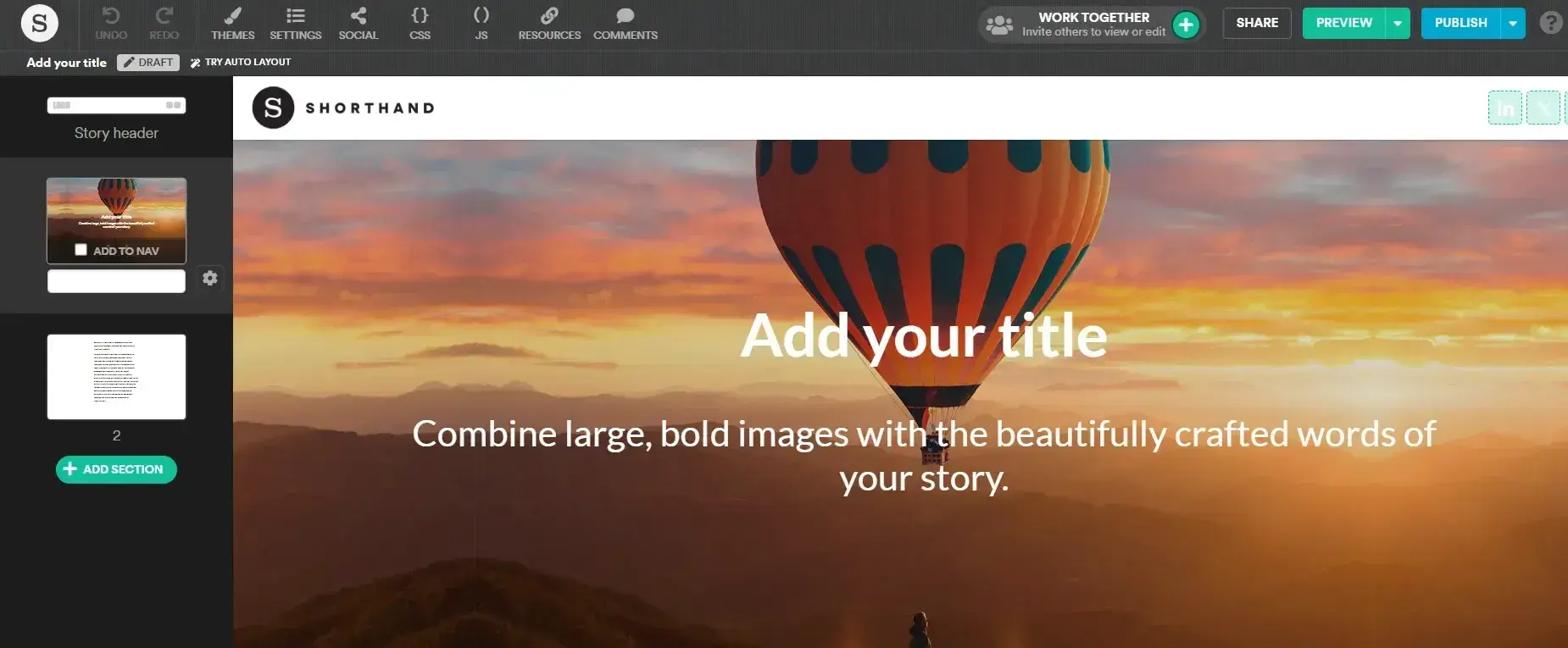
While Shorthand offers seven pre-designed themes, you can also create a custom theme with your brand colors, fonts, and other details. However, this capability is available only to paid users.
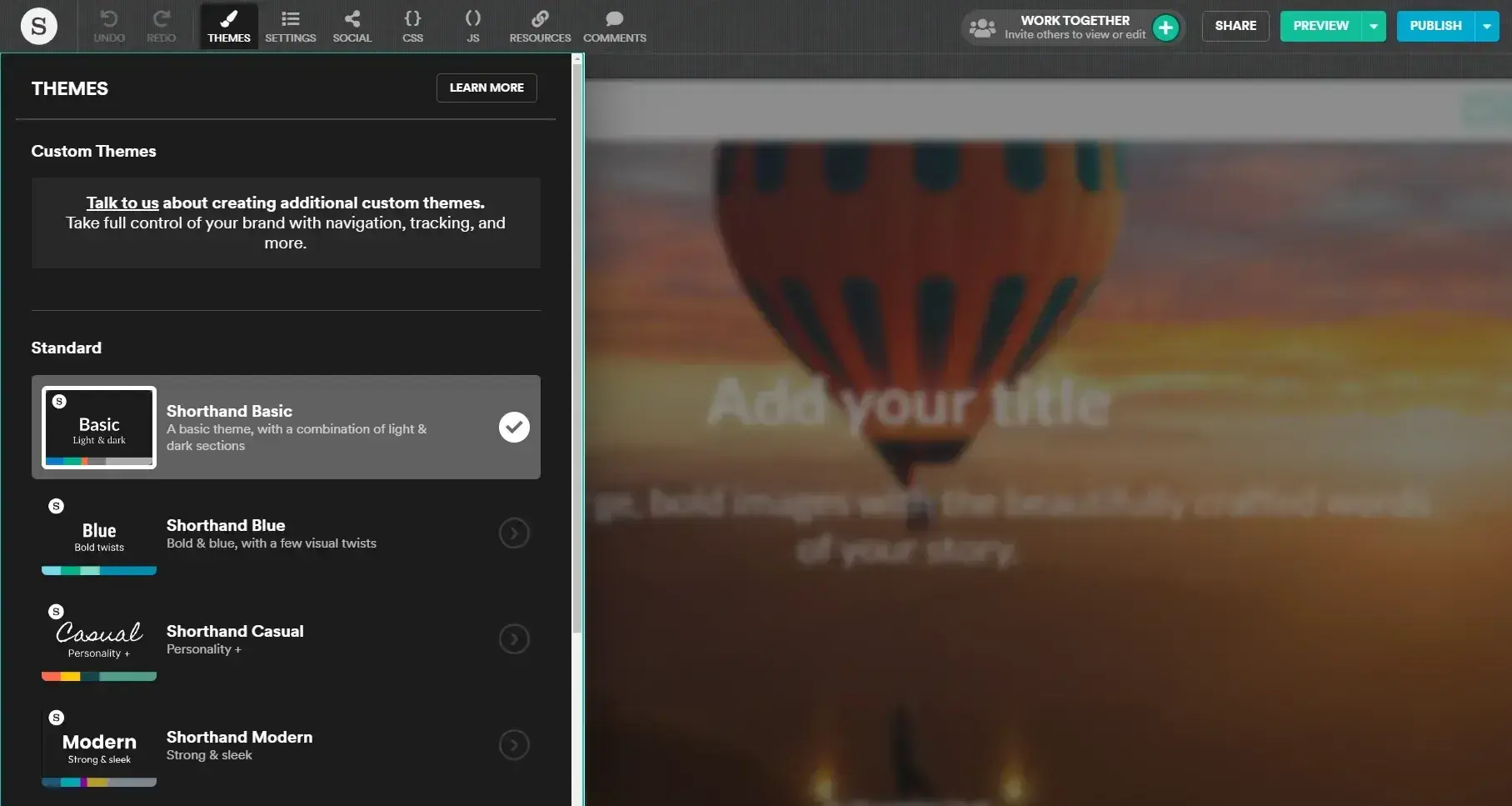
You can create a new section on your site by choosing any of these available sections. Shorthand offers a wide range of section templates for different elements like headings, quotes, timelines, maps, and more.
For example, add the “Scrollmation” section to create two columns — one with scrolling text and another with a fixed image or video.
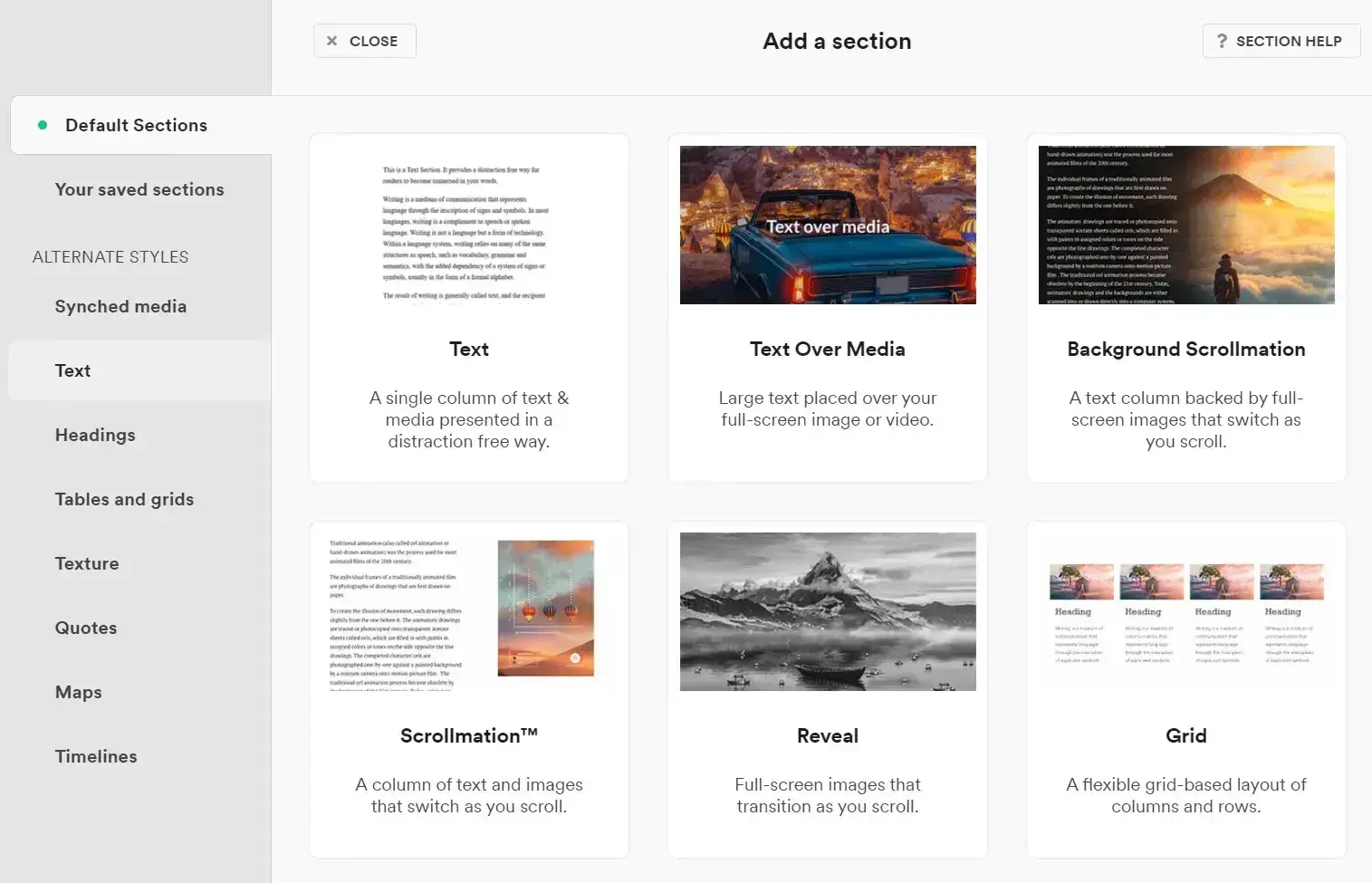
It’s possible to edit every minute detail in a section. You can add a section name, change font sizes, modify colors, add rich embeds, and more.
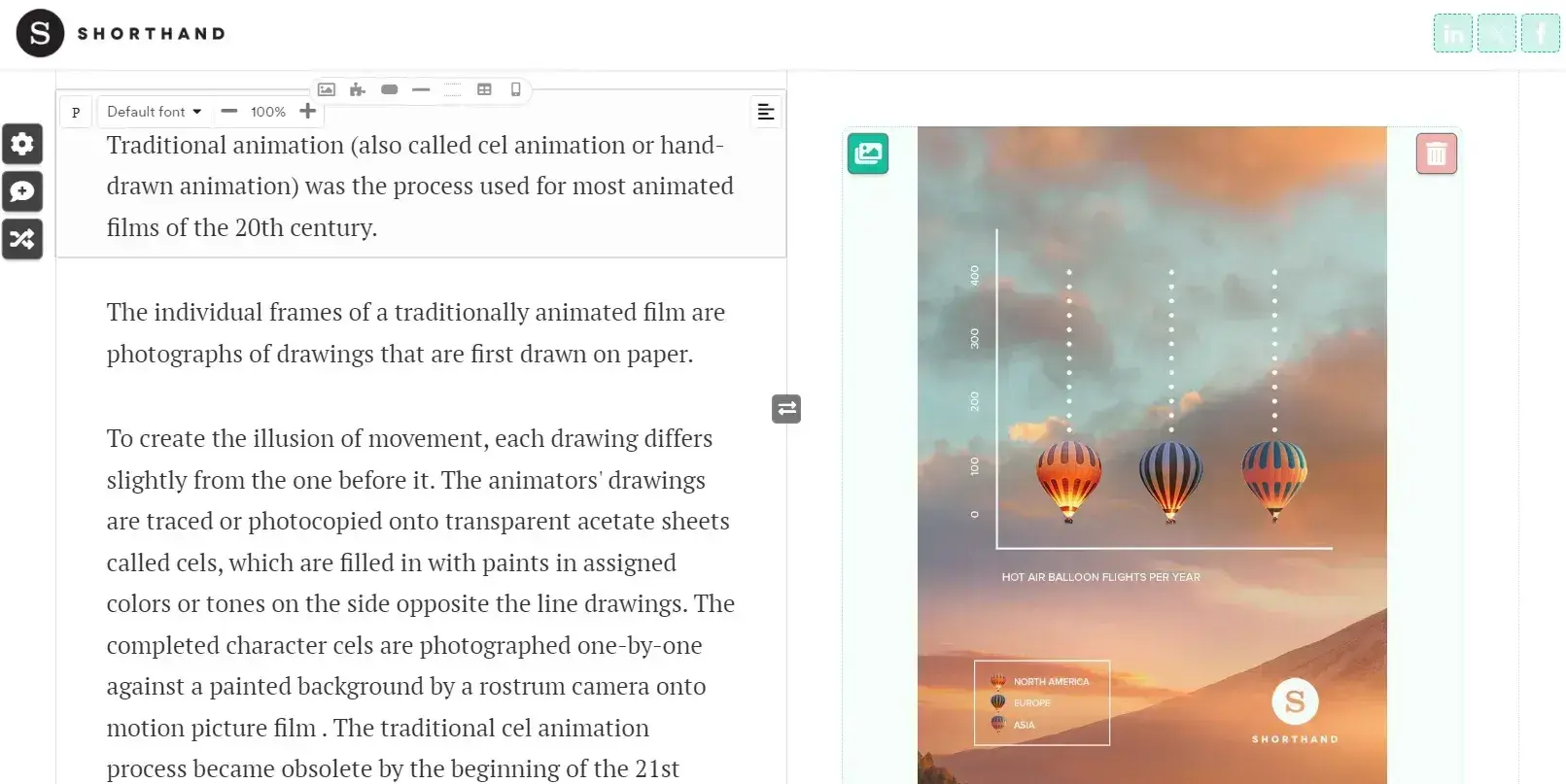
Choosing the Right WYSIWYG HTML Editor
Now, you may be sold on trying out a WYSIWYG editor for yourself but aren’t sure where to start. (Don’t worry, I was in the same boat!) Before testing out the tools themselves, I recommend thinking through what features you’ll need most.
Here are some tips I recommend once you’re at this stage.
1. Think Integrations
Figure out what kind of app or website you plan to develop. Then, list out the integrations and coding languages you'll need the editor to work with.
When I first started, I underestimated the power of integrations. I remember working on a project that required seamless integration with various APIs, and the editor I initially chose couldn't keep up.
That experience taught me to always start by listing out the specific functionalities, coding languages, and integrations essential for my projects. It's crucial that your editor aligns with the architecture of your website or app.
Some editors support direct integrations with CMS platforms, while others offer plugins for analytics, ecommerce, and SEO tools. If you’re working with a development team, ask them to check if the editor allows for easy collaboration and version control. Picking the right integrations upfront can save you from costly workaround and compatibility issues later on.
2. SEO: A Non-Negotiable
Structured markup can help search engines process and understand your content, so this is another feature I recommend looking for.
In one project, I focused solely on aesthetics and neglected structured markup. The site looked great but performed poorly in search rankings. Since then, I've always looked for editors that support SEO-friendly practices.
Remember, it‘s not just about how your website looks but also about how it’s understood and ranked by search engines.
Look for editors that automatically generate clean, semantic HTML, as messy code can hurt SEO. Features like meta tag customization, alt text for images, and schema markup support can also make a big difference.
3. Customization Capabilities
I've also learned that going beyond standard templates is essential for creating a distinctive online presence.
An editor that offers extensive customization capabilities allows you to tailor the user experience to your audience‘s needs. It can turn your website into a reflection of your brand’s personality.
The right WYSIWYG editor can help you create a unique look and user experience for every user in your audience.
Pay attention to features like custom CSS, flexible layout options, and advanced styling controls to nurture your creativity. Some editors alo support dynamic content elements, allowing for more interactive and engaging designs.
4. Time-Saving Features
Efficiency is everything. Features like advanced code pasting, a straightforward interface, and collaboration tools have been lifesavers for me when meeting tight deadlines.
For example, I worked on a project where collaborative editing features allowed my team to work simultaneously on different parts of the site, dramatically speeding up the development process. Having real-time preview options also helps catch issues early on, reducing the need for constant revisions. Remember, the right editor should help you work smarter, not harder.
WYSIWYG Interface: 4 Essential Features
Before I share my review of the 20 best WYSIWYG HTML editors, save this handy checklist of features to look for in all the options you explore.
1. Toolbar
A handy toolbar allows you to make quick changes anywhere on your page. While they vary from editor to editor, they offer text formatting like color, size, and font, and let you adjust the layout of the site.
You’ll also get alignment options to check whether your text and images appear in the desired order across different sections of a page. Plus, this toolbar will include options to add an embed, a divider, a table, and similar elements.
Take a look at this toolbar example from Summernote. Notice that it allows you to select your preferred fonts, insert tables, adjust line alignments, and many more.
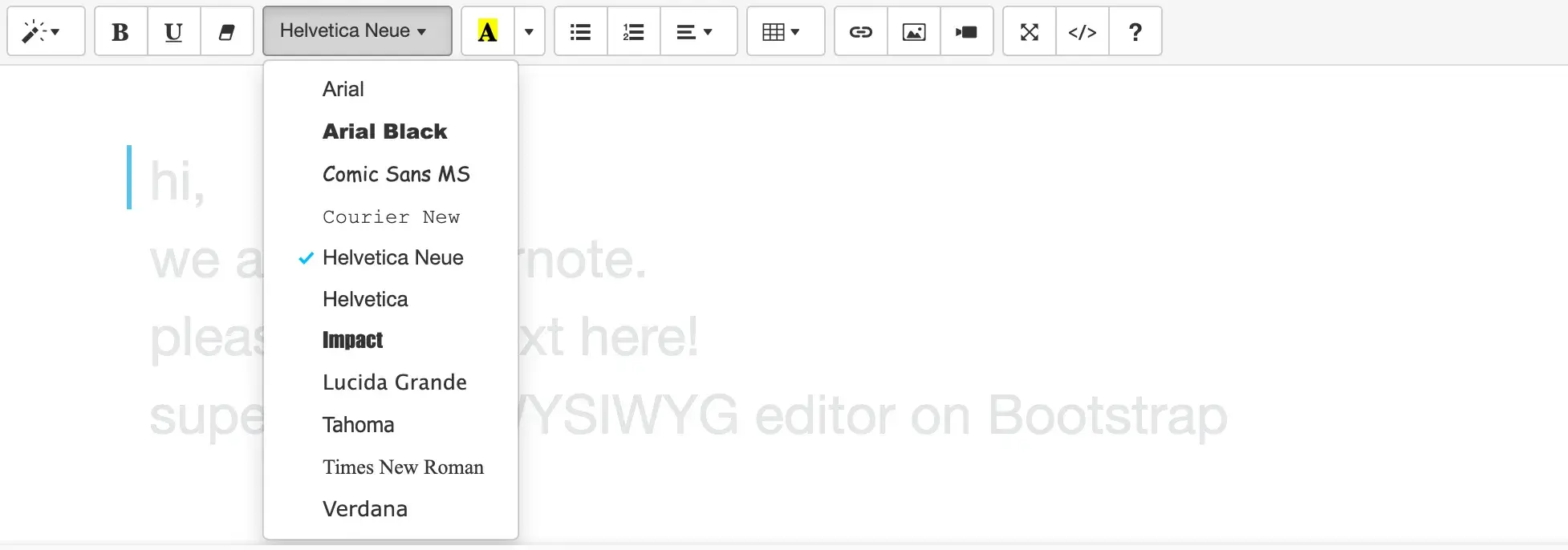
2. Content Editor
As someone who’s used a few different WYSIWYG website builders, I can say that the editing panel decides the effectiveness of an HTML editor. This is essentially where you can add, style, and review your content in real time. Since it's the core functionality, you can’t leave any room for a confusing UI or poor UX.
I recommend looking for an editor that has easy drag-and-drop element options. Also, check if it comes with a panel that makes adding images, text, and multimedia fast and simple.
3. Preview Mode
The preview mode is another important feature of a WYSIWYG editor. It allows you to view your webpage across different devices and make adjustments before clicking “Publish.” This is where you can check if your design is truly responsive.
Instead of manually testing your site on multiple devices, your HTML editor’s preview mode will visualize your page on different screen sizes.
Some editors will even show different orientations — here’s an example of a page previewed in tablet portrait mode:
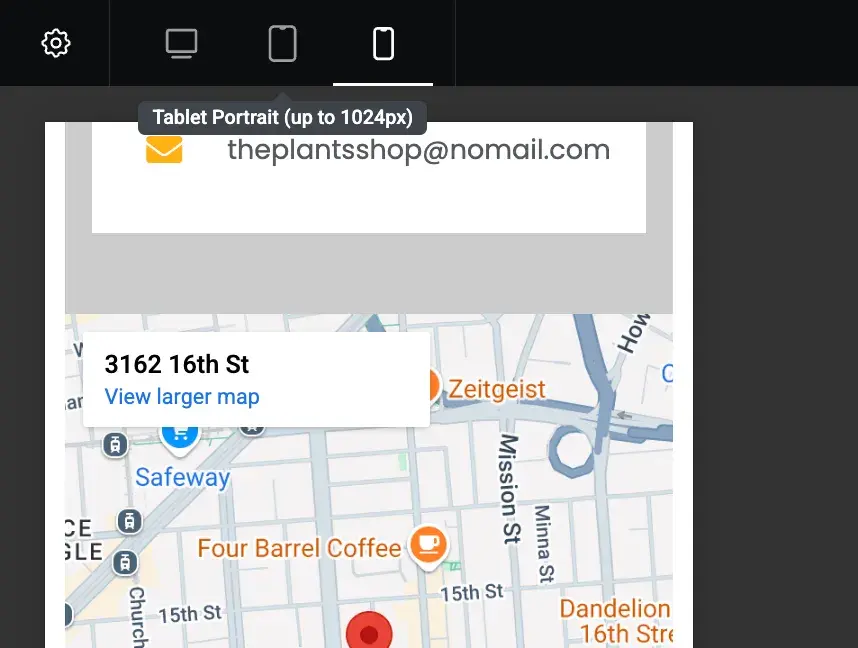
4. Undo/Redo Buttons
Designing websites is a tedious process — I know. You can naturally make mistakes and tap a button that you didn’t want to use. That’s why a simple undo button can quickly fix the problem before it becomes a bigger blunder.
The undo/redo buttons are also useful for experimentation. You can easily make changes to your webpage and reverse the unwanted changes using the undo button. Then, re-apply them, if necessary, with the redo button.
Pick the perfect WYSIWYG HTML editor.
A WYSIWYG HTML editor can truly transform your web development process. Instead of getting stuck in the loop between your code and the preview mode, you can create and view your content simultaneously.
I’ve reviewed 20 of the best free and premium WYSIWYG HTML editors, each with its own strengths. But the real magic happens when you find the one that resonates with your project.
So, explore and experiment before choosing the tool that makes your life easier and drives innovation.
Editor's note: This post was originally published in April 2024 and has been updated for comprehensiveness.
HTML






-2.webp)

![14 Stunning HTML Websites [+ How They Work]](https://53.fs1.hubspotusercontent-na1.net/hubfs/53/Copy%20of%20Featured%20Image%20Template%20Backgrounds-1.webp)
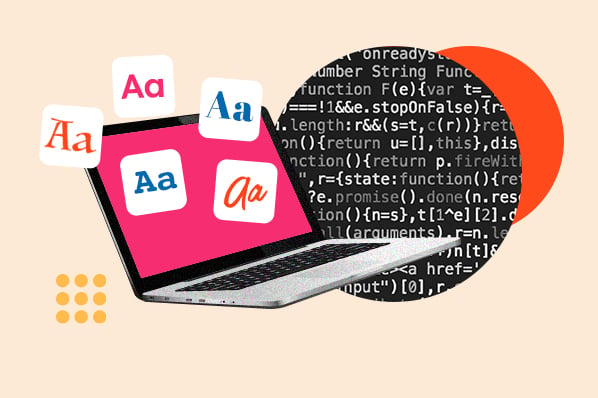

![How to Embed Google Map in HTML [Step-By-Step Guide]](https://53.fs1.hubspotusercontent-na1.net/hubfs/53/Google%20Drive%20Integration/How%20to%20Embed%20Google%20Map%20in%20HTML%20%5BStep-By-Step%20Guide%5D-2.jpeg)
